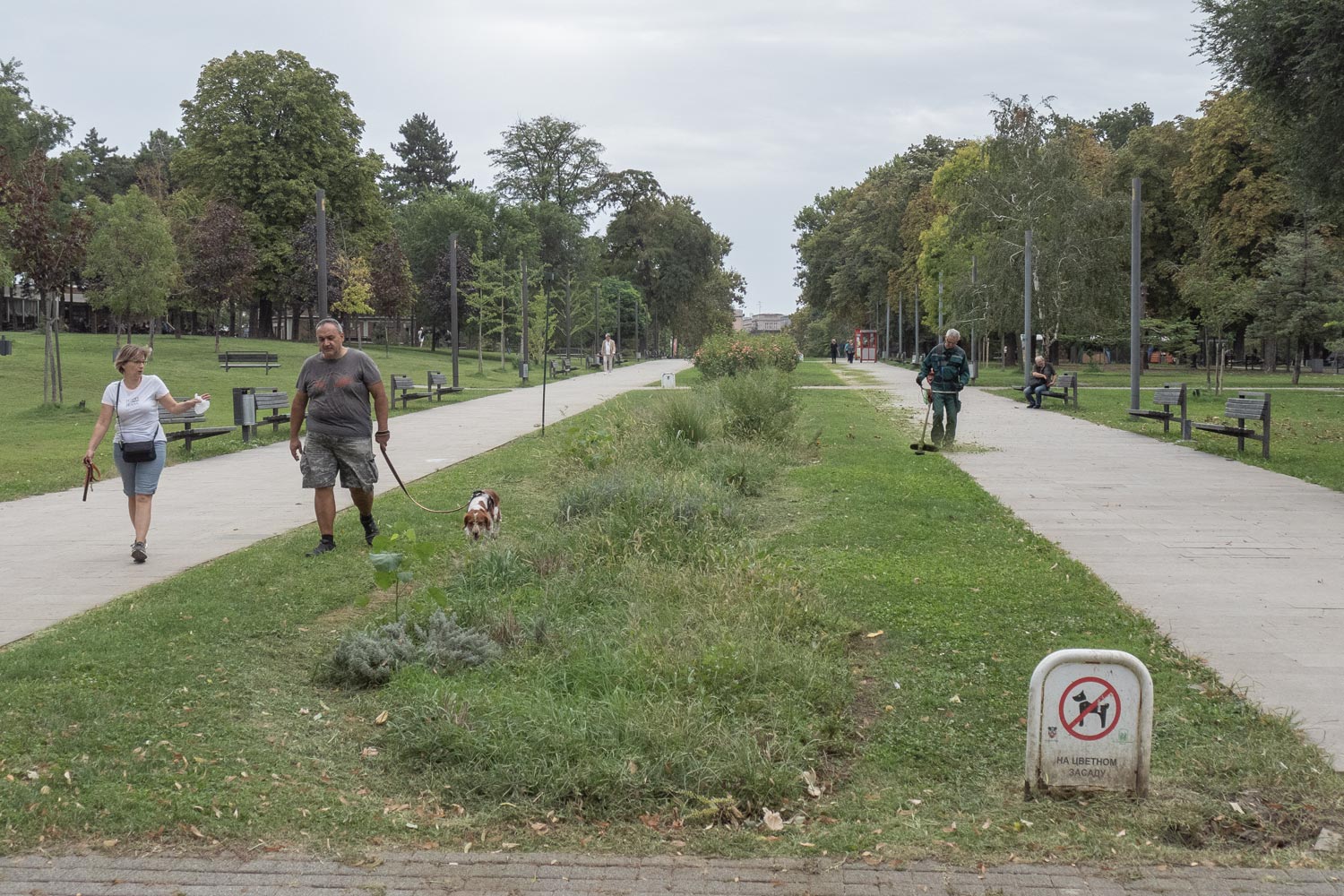Belgrade
When I arrived in Serbia, I expected to try delicious Balkan cuisine and walk through streets with historical architecture. The Serbian food turned out to be tasteless, and the historical architecture was in such a miserable state that it was impossible to look at without tears.
Belgrade is an extremely run-down city with almost nothing to see. Only a couple of the oldest temples in the Zemun neighborhood date back to the 18th century; everything else is modern. Even the walls in the center are covered in crude graffiti, most of the buildings are decaying and peeling, and the streets often reek of urine.
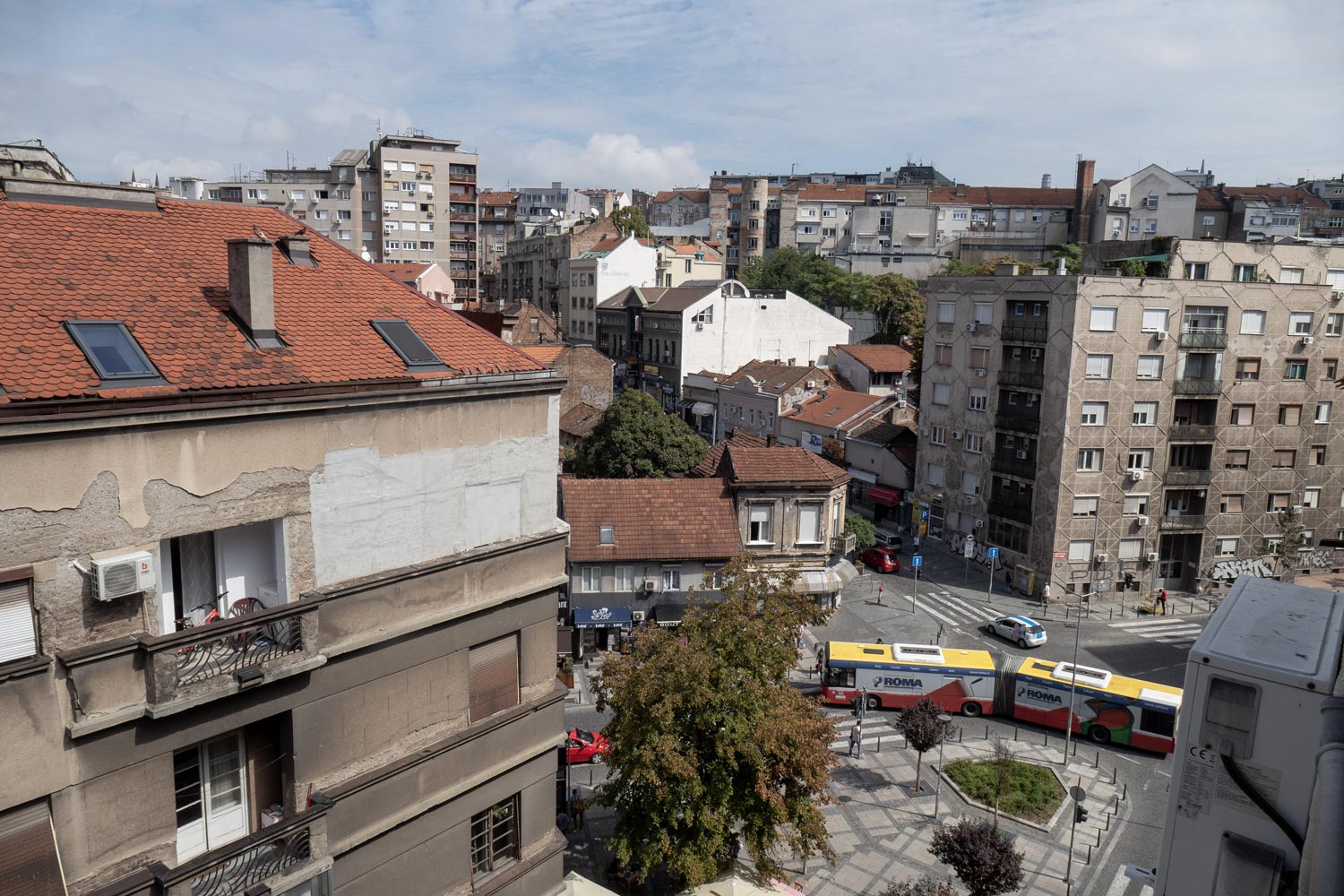
The most interesting places in Belgrade are related to the bombing of the city by NATO forces in 1999.
A brief history: After World War I, Austria-Hungary and the Ottoman Empire collapsed. Serbia united the lands belonging to them and attempted to create a kind of Soviet Union called Yugoslavia.
The structure turned out to be extremely unstable due to the complex ethnic composition. Serbs, Bosniaks, Croats, and Albanians lived not within historical boundaries but constantly moved and mixed. The leader of Yugoslavia, Josip Broz Tito, attempted to solve the problem by redesigning the country so that the borders of regions roughly corresponded to the borders of the residing peoples. It became more logical, but now these borders could easily declare independence if necessary.
The opportunity arose very soon. Tito died, and Slobodan Milošević came to power. The guy had strong nationalist views and began to curtail the rights of the republics. Then the Soviet Union collapsed, and Yugoslavia got much worse.
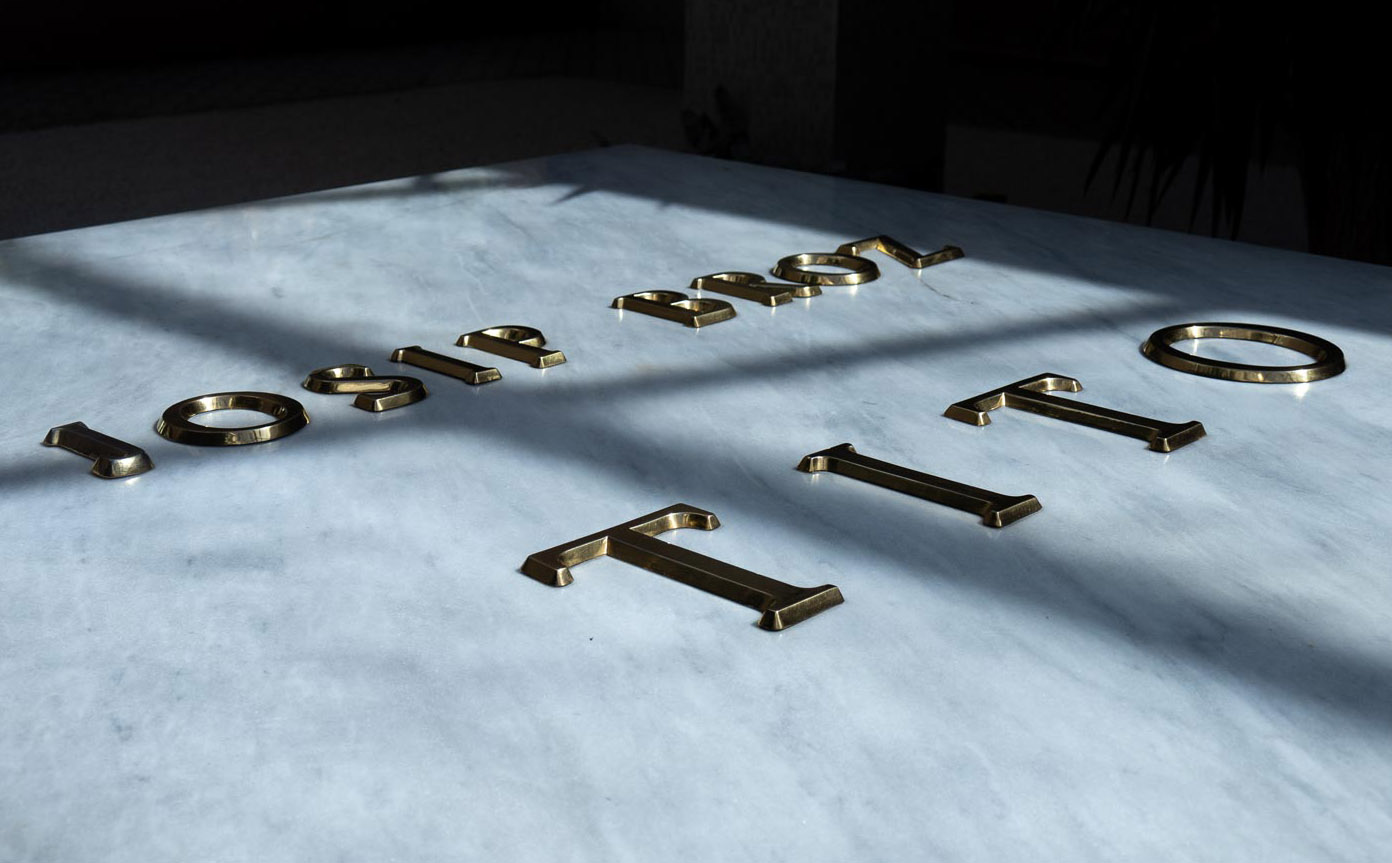
In general, the republics decided to secede from Yugoslavia. Slovenia was the first to break away peacefully. Croatia faced shelling of Dubrovnik and an ethnic massacre orchestrated by Milosevic. When Bosnia seceded, the Serbs besieged the capital city of Sarajevo and subjected the Bosniaks to a mini-Leningrad, blockading them for a whole 4 years.
Sanctions were imposed against the Milosevic regime, NATO forces intervened to support Croatia and Bosnia, and the UN expressed extreme concern. As a result, the republics gained independence, the Serbs got shit beaten out, and the war halted in 1995.
But all of this is unrelated to the bombing of Belgrade.
Three years later, Kosovo, a small historical region in the south of Serbia, finally decided to secede. Prior to World War I, Kosovo was part of Turkey, and by that time, Serbs accounted for less than 10% of the population there.
This did not confuse Milosevic, who delivered a fiery speech in Kosovo, declaring the region as the heart of Serbia. He built a Serbian temple on the university campus and implemented direct control from Belgrade.
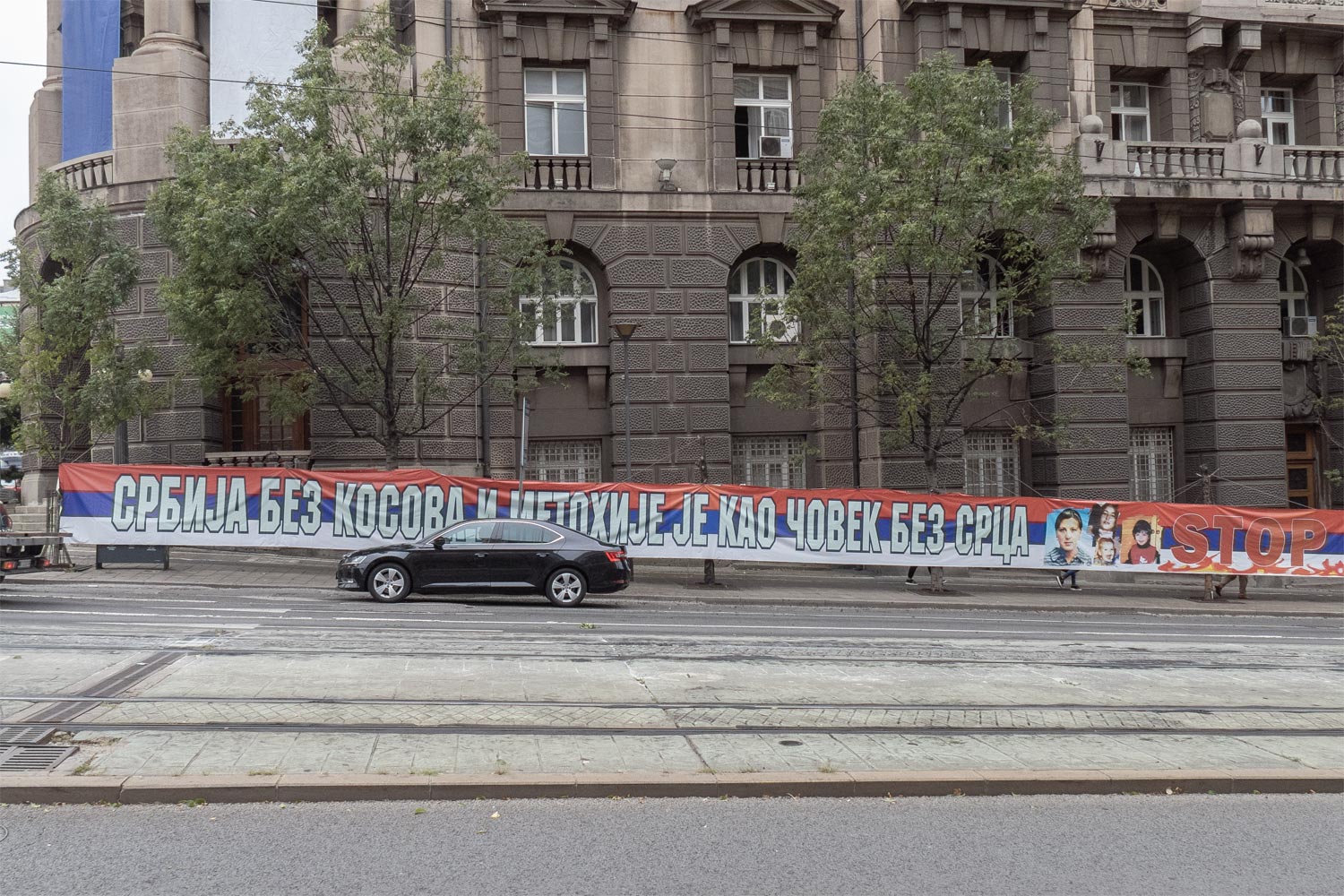
After much hesitation, Kosovo said, “Enough is enough” and declared independence. Milosevic responded, “Over my dead body,” and deployed troops to Kosovo.
Then started such a bloody mess of bombings, ethnic cleansing, and organ trafficking, that the United States intervened and said, “NATO them all.”
And only then was the strike on Belgrade. The main target was the Serbian Ministry of Defense. Its ruins still stand in the city center to this day.
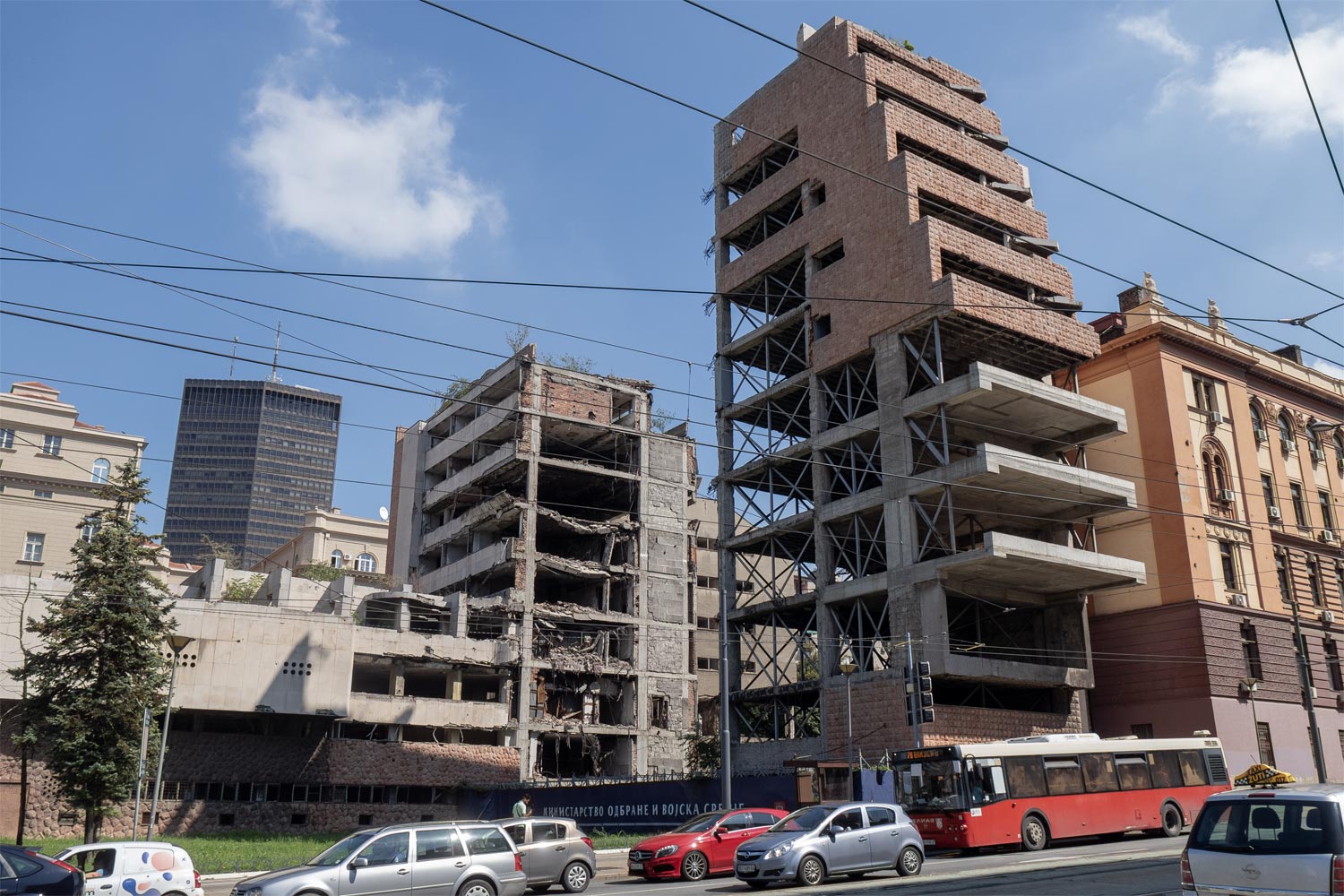
Against the backdrop of destroyed walls, there is a Serbian army propaganda poster with the slogan “He who does not know fear, moves forward.” What a catchy slogan; we should hang such at pedestrian crossings.
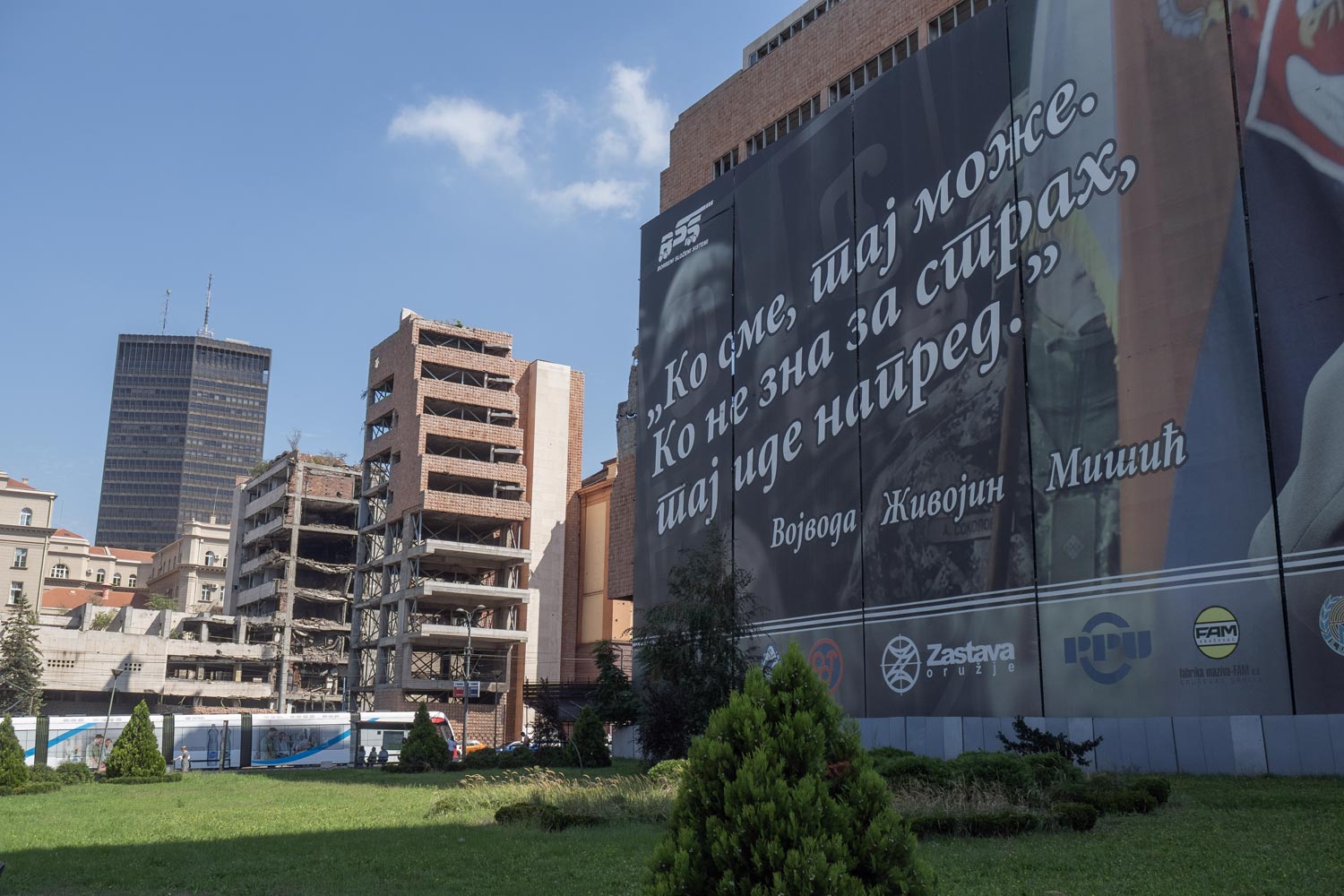
To be honest, it’s unclear what the Serbs are trying to show by refusing to remove the ruins. That the city lacks funds for a new ministry, or what happens if bombing other cities for 10 years?
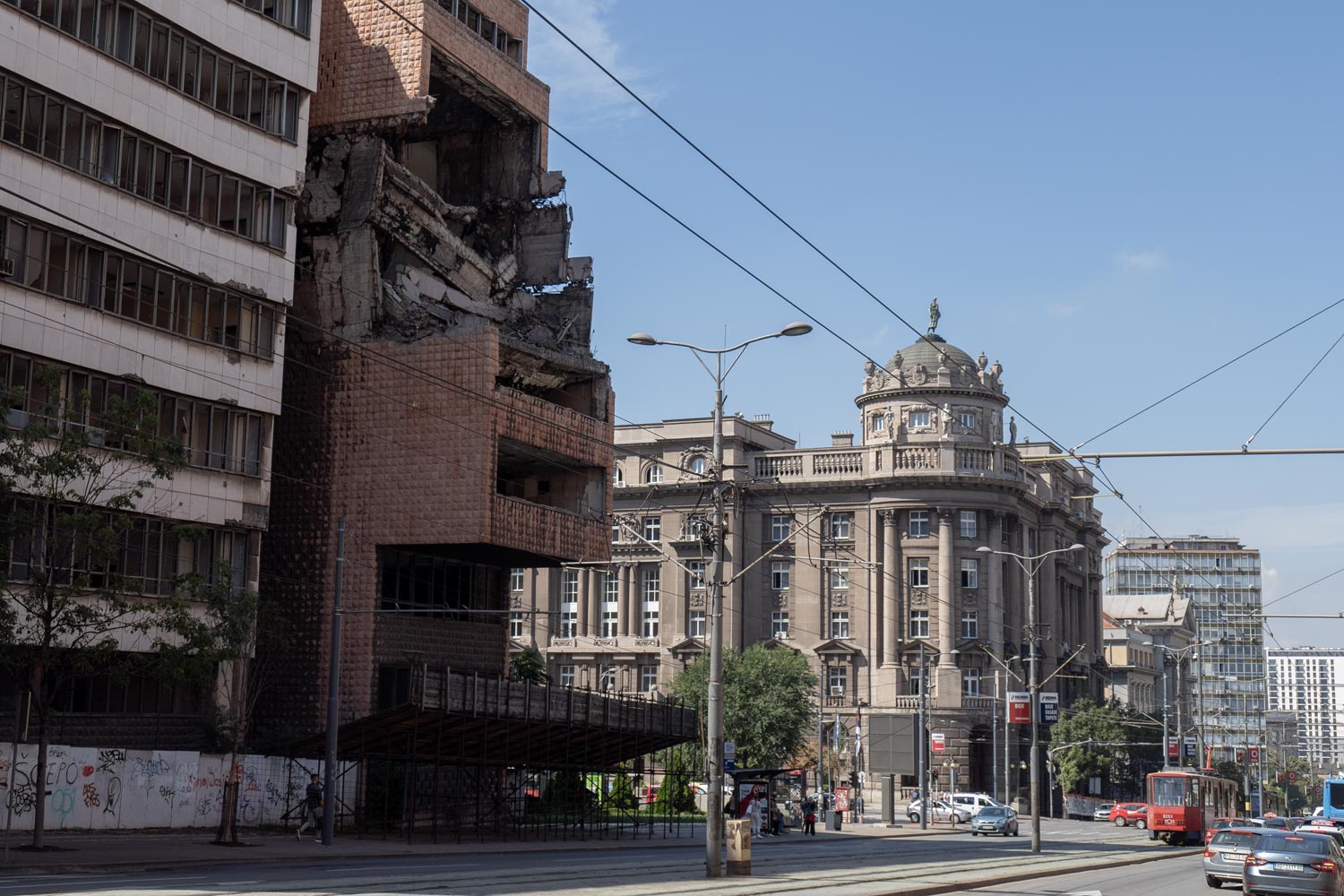
Interestingly, Milosevic himself was never hit, although the bombing did bring a logical conclusion to the war. After dragging on for a couple more years, his own people took him by the hand and sent him straight to The Hague, and six months later, sanctions were lifted from Serbia.
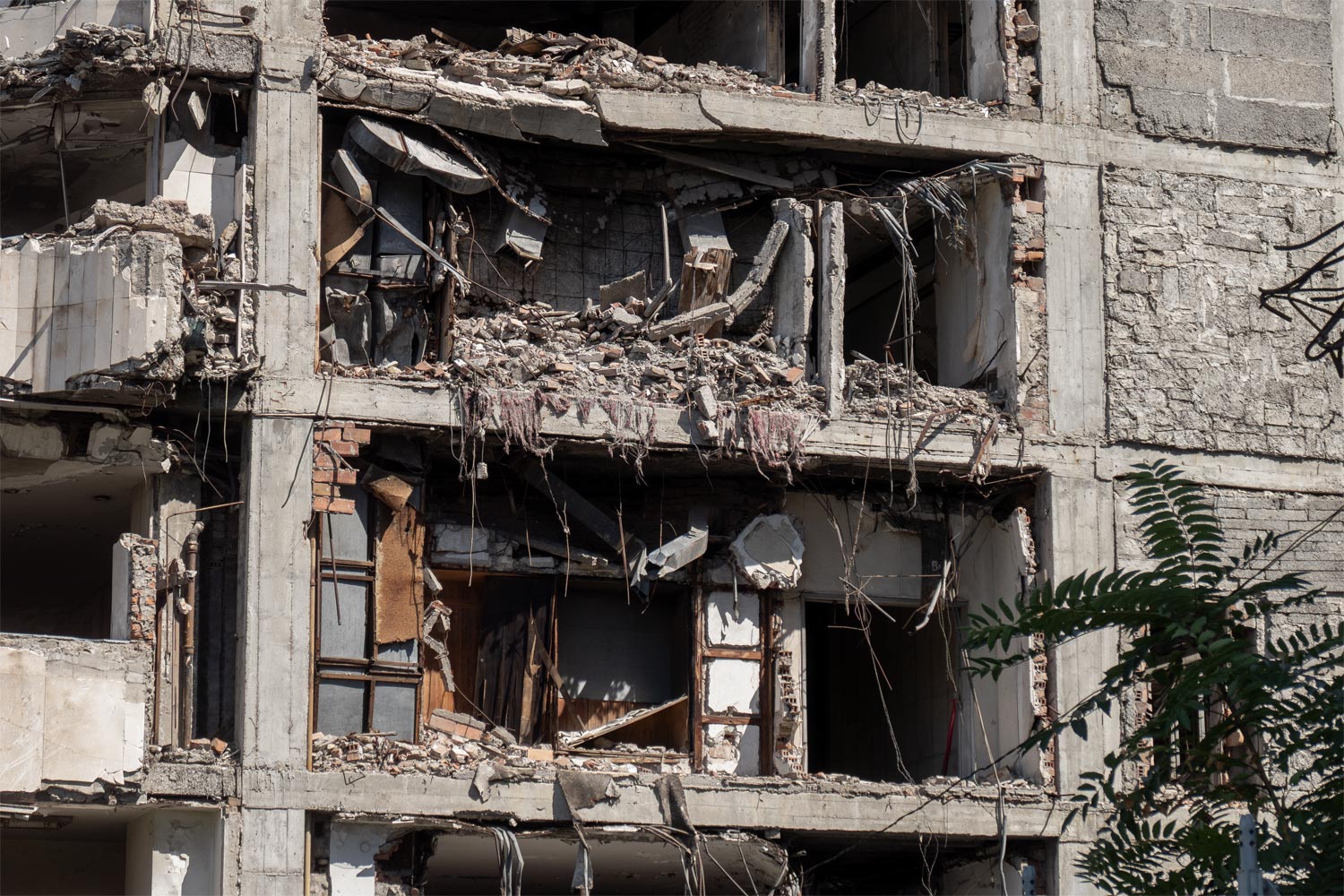
Another blow hit the radio center. NATO assures that it was a dual-purpose object used by the military for coordination of actions. Serbia denies it.
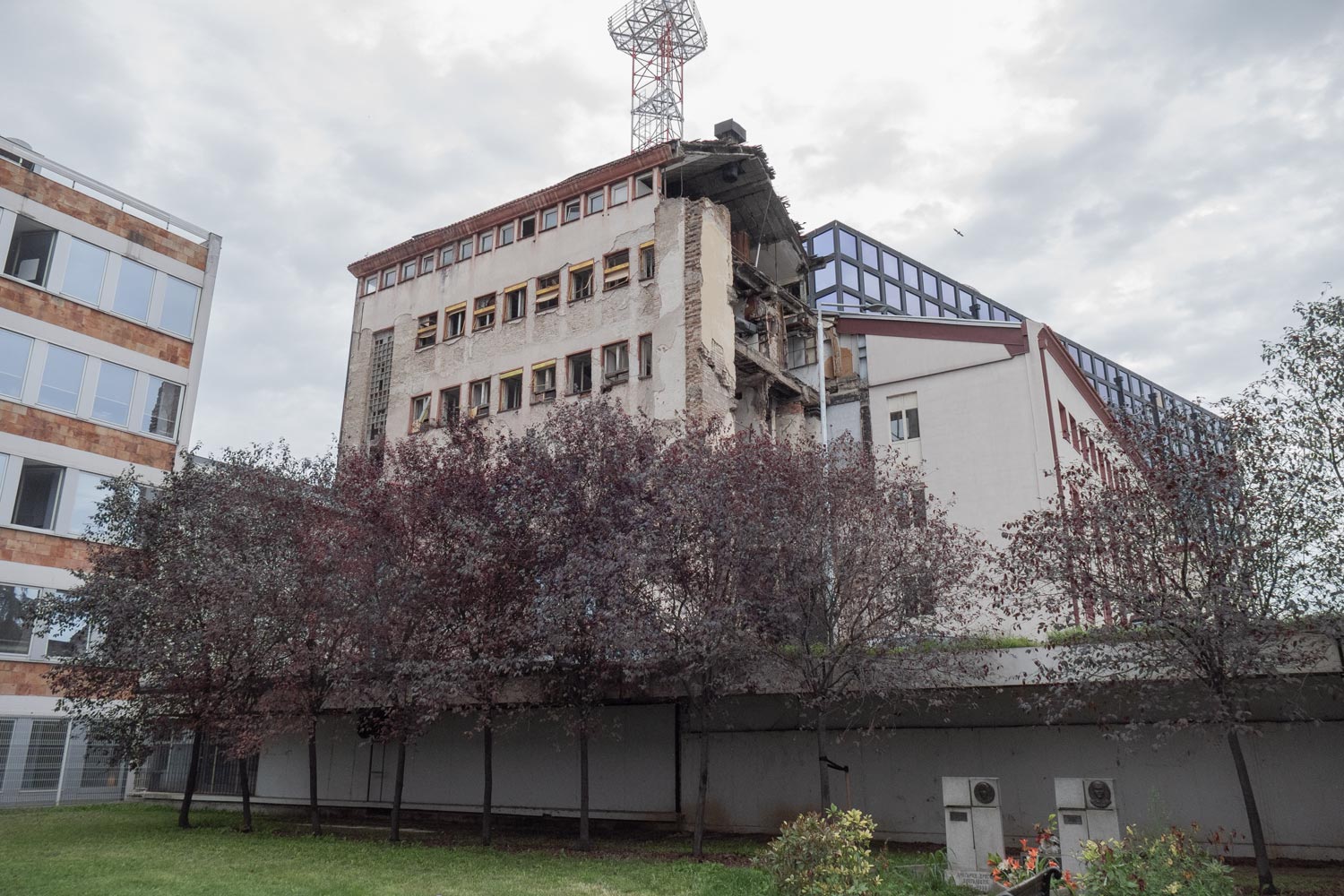
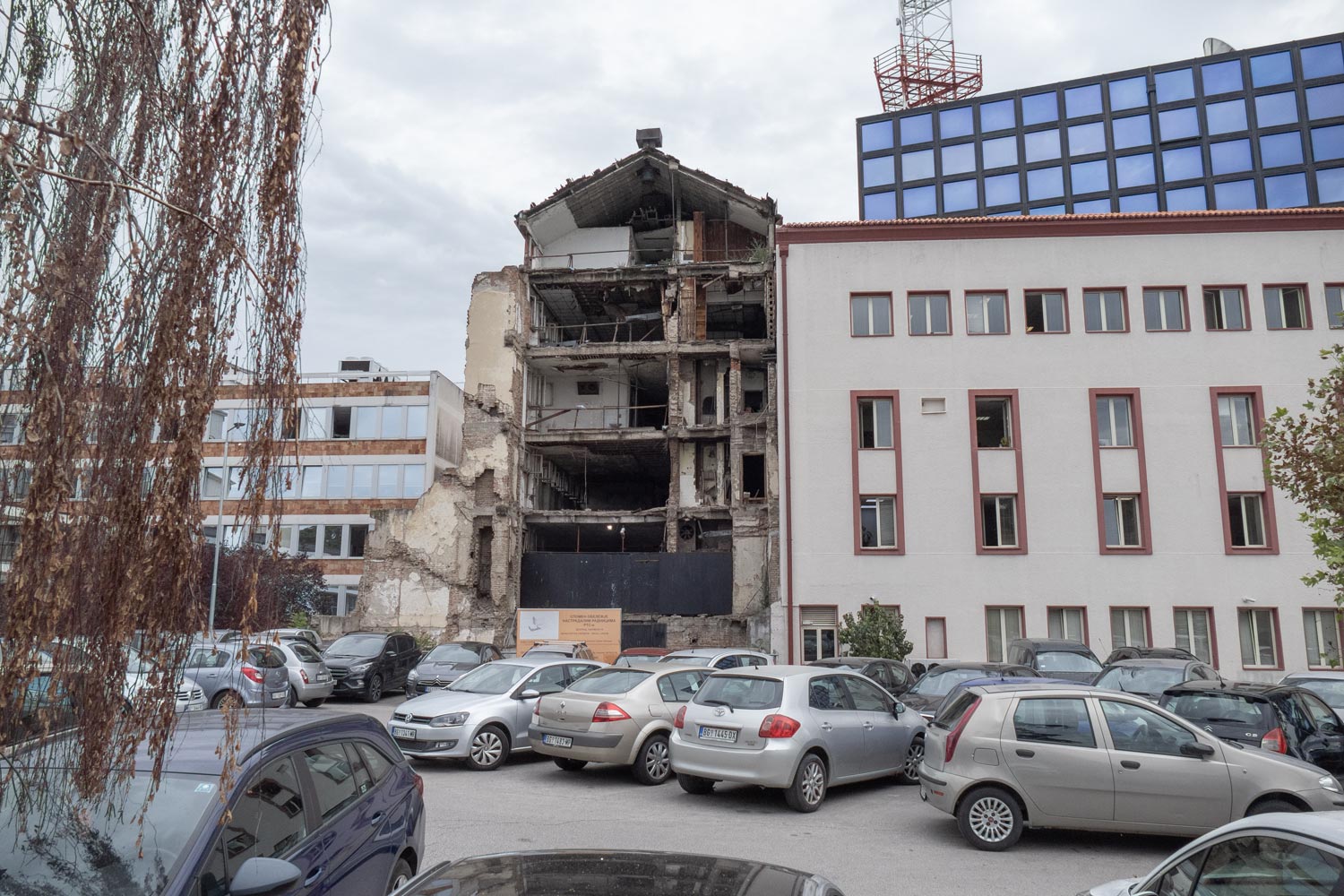
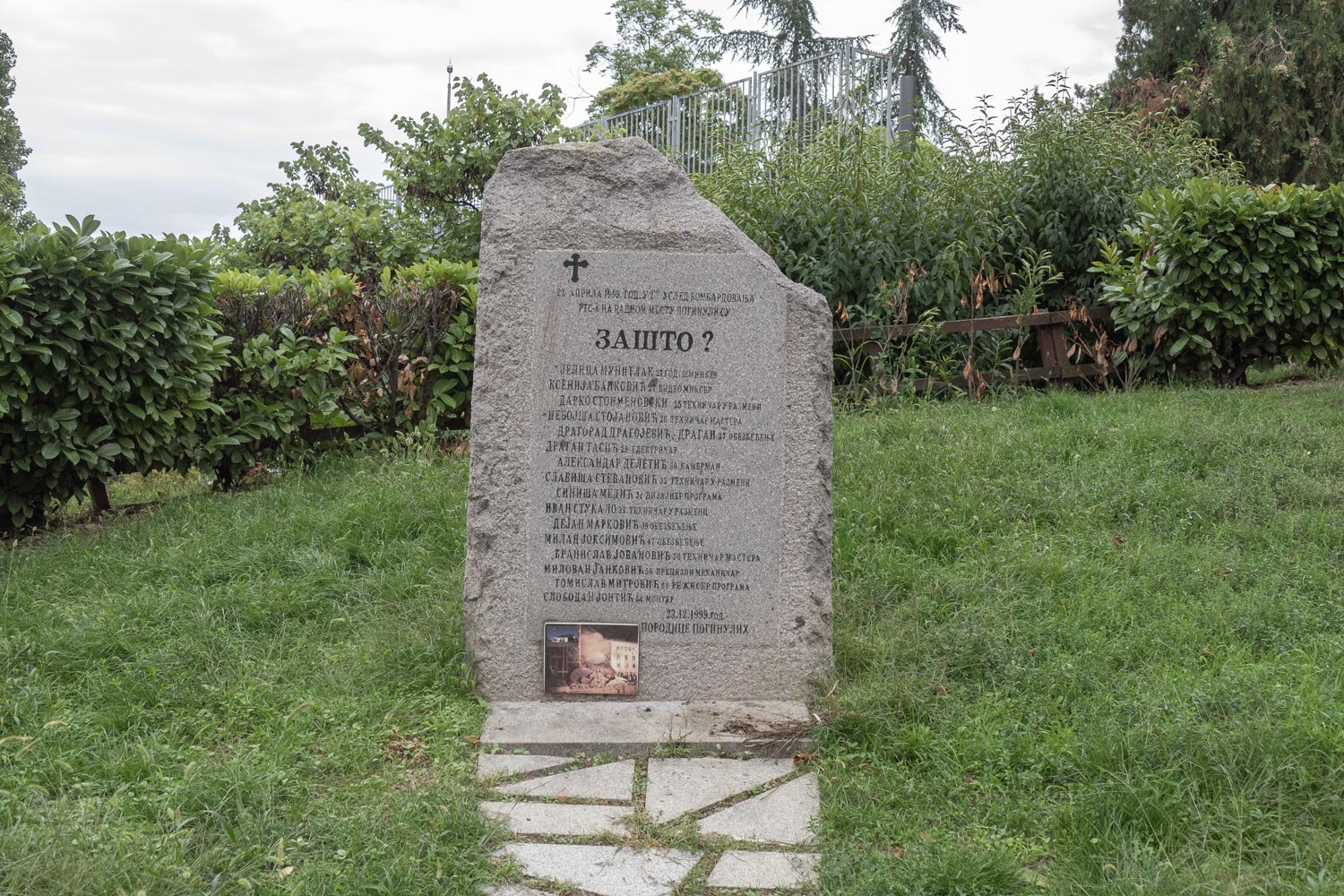
There are no other traces of war left in Belgrade, but all the walls are covered with slogans of Serbian nationalists. They especially love Ratko Mladic.
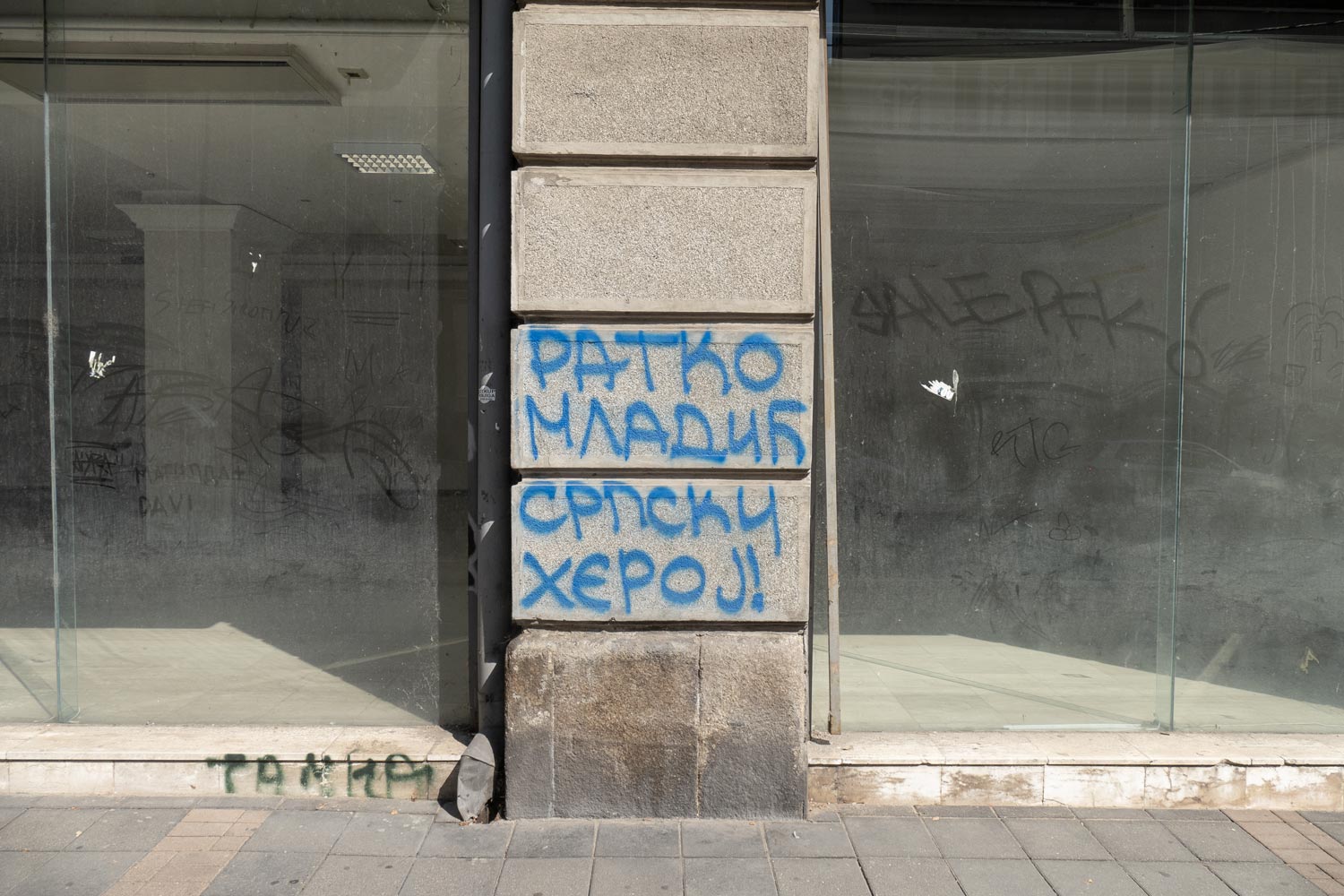
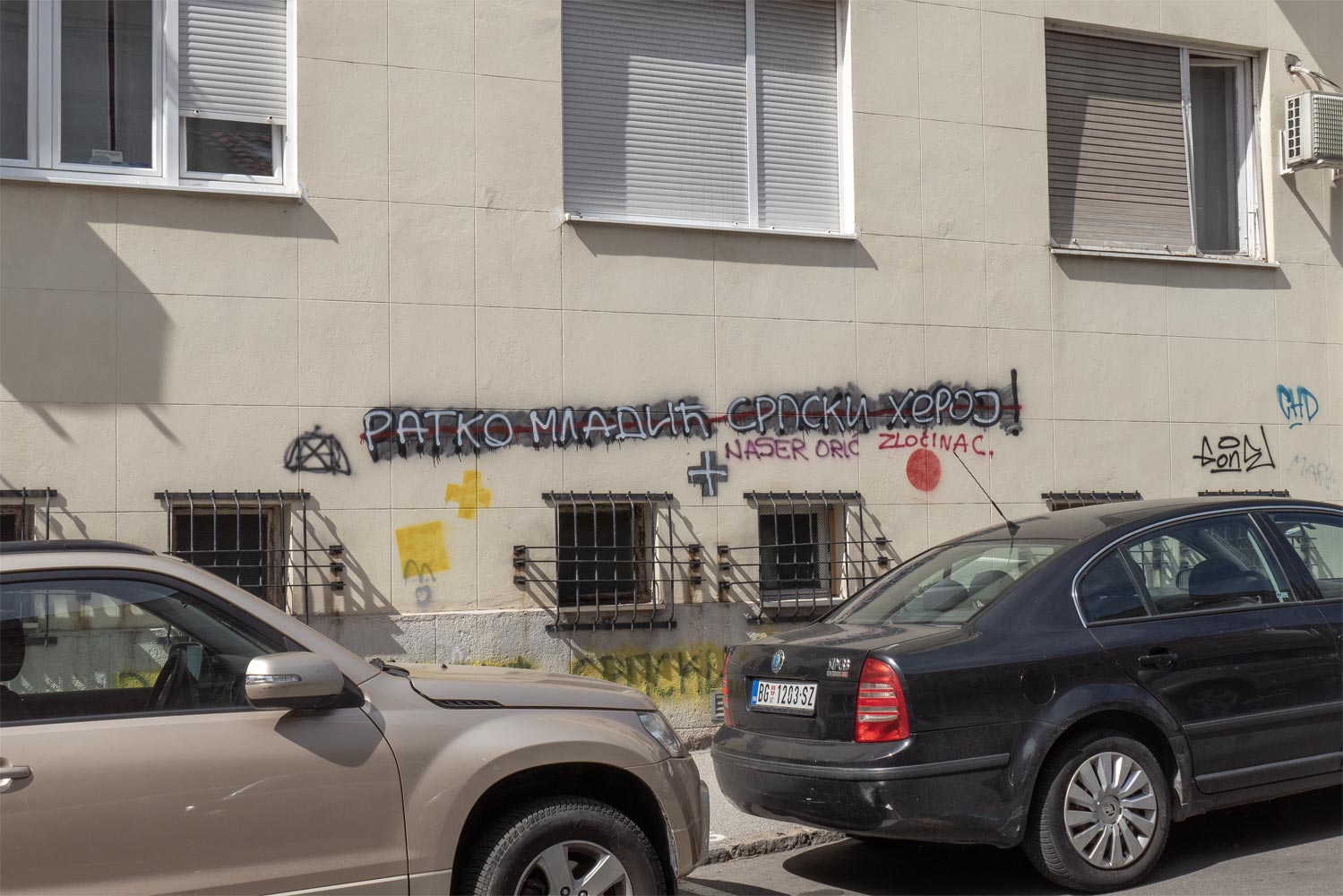
Ratko Mladic was a general of the Serbian army during the war. He is referred to as the main Serbian butcher. For instance, he commanded units that carried out a massacre in the town of Srebrenica.
In this small town in Bosnia, the Serbian army started ethnic cleansing, killing over 8,000 Bosniaks. This is the largest mass murder in Europe since World War II. The actions of the Serbs were recognized as genocide, and Ratko Mladic was sentenced by the tribunal to life imprisonment along with his friend Milosevic.
Serbia itself condemned the massacre, but now portraits of Mladic are being painted all over Belgrade. However, Serbs assured me that only a miserable percentage of people support Mladic; they just makes the most smell.
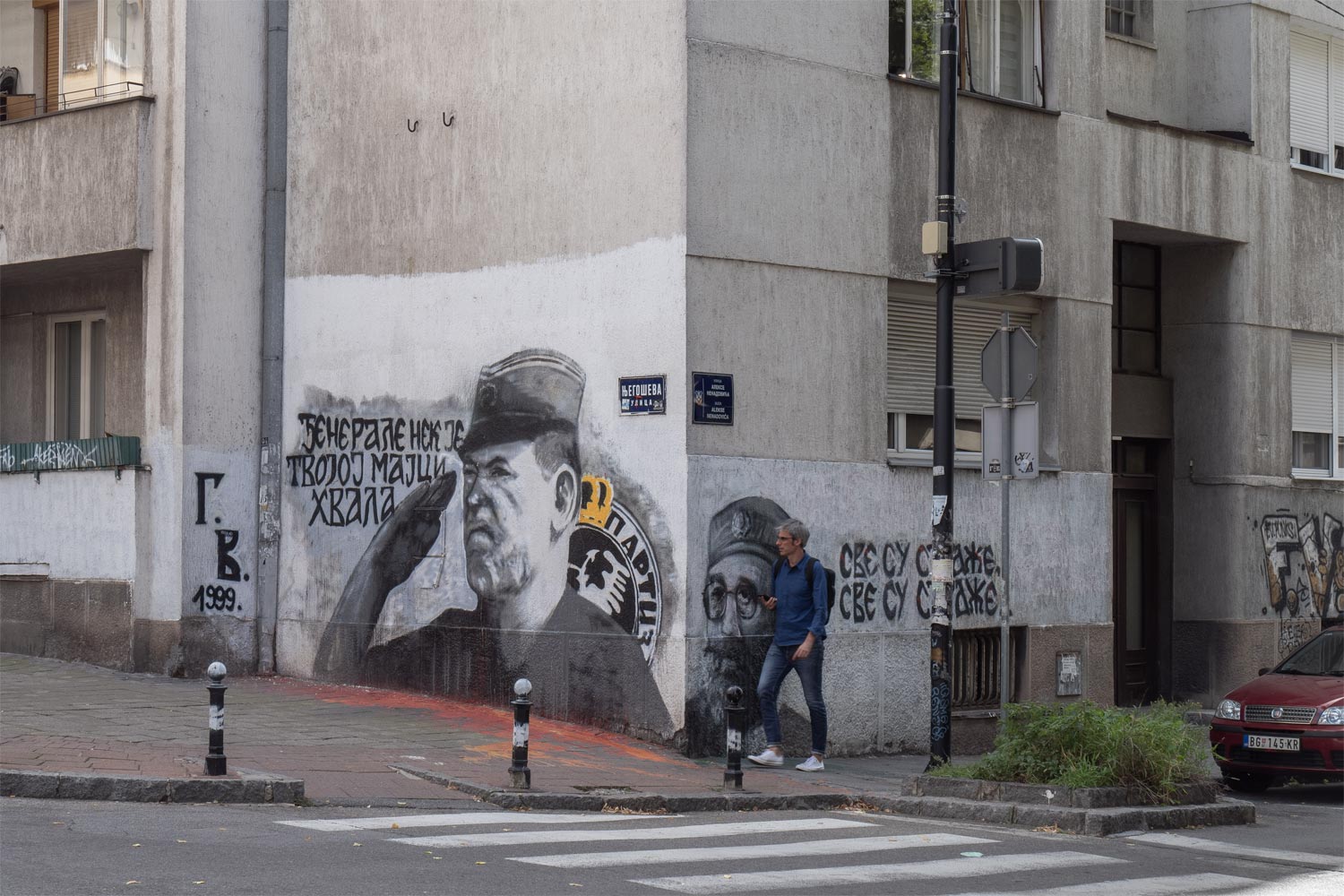
I couldn’t find a poll on support for Mladic, but I found another one: 30% of Serbs supported Russia in the war with Ukraine. This was enough to spark a full-blown war of graffiti on the streets of Belgrade. The letter Z, symbolizing the Russian invasion, is being drawn here over the Ukrainian flag, and vice versa.
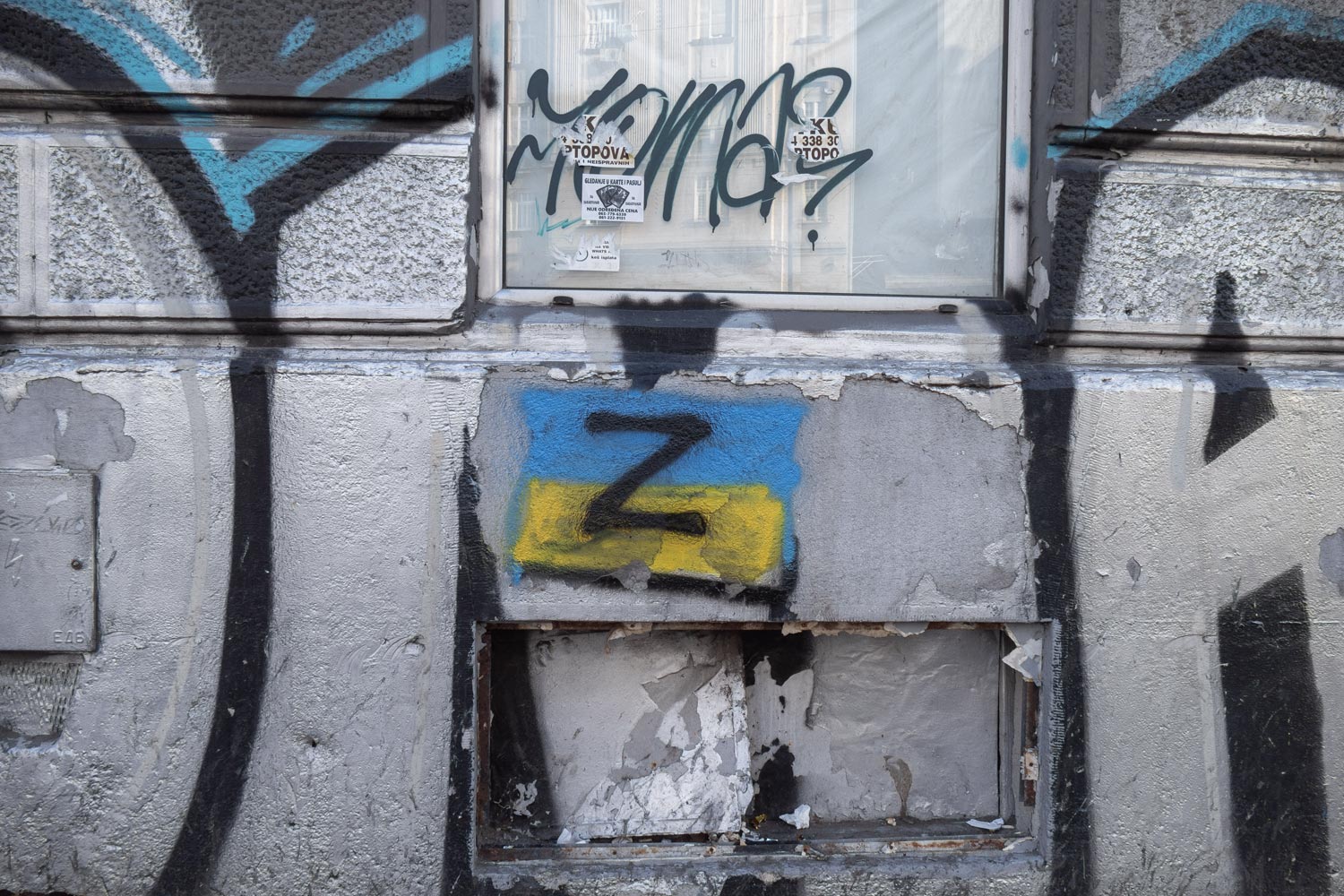
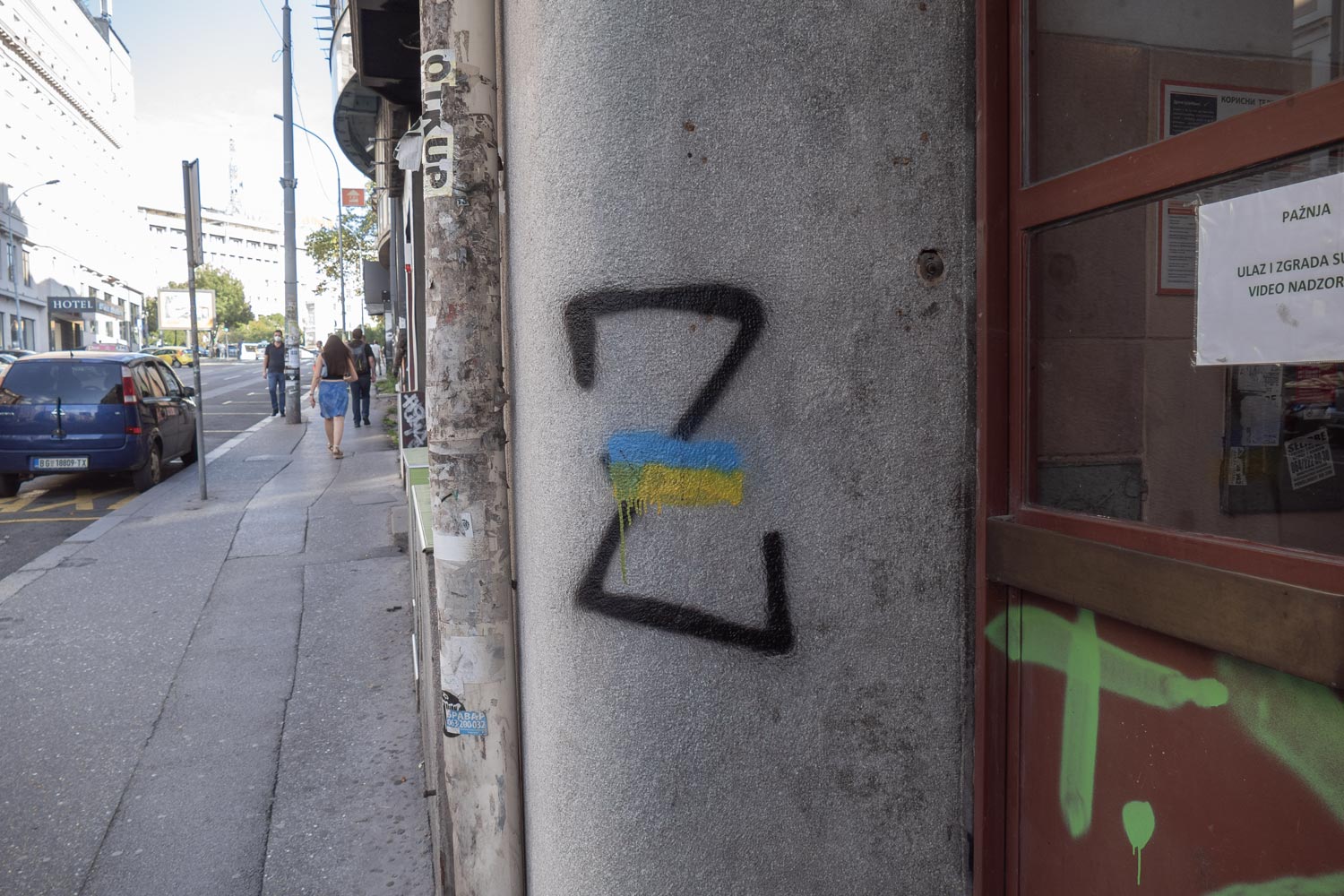
At the same time, no one prohibits speaking in support of both Russia and Ukraine. Well, it should be this way: freedom of speech.
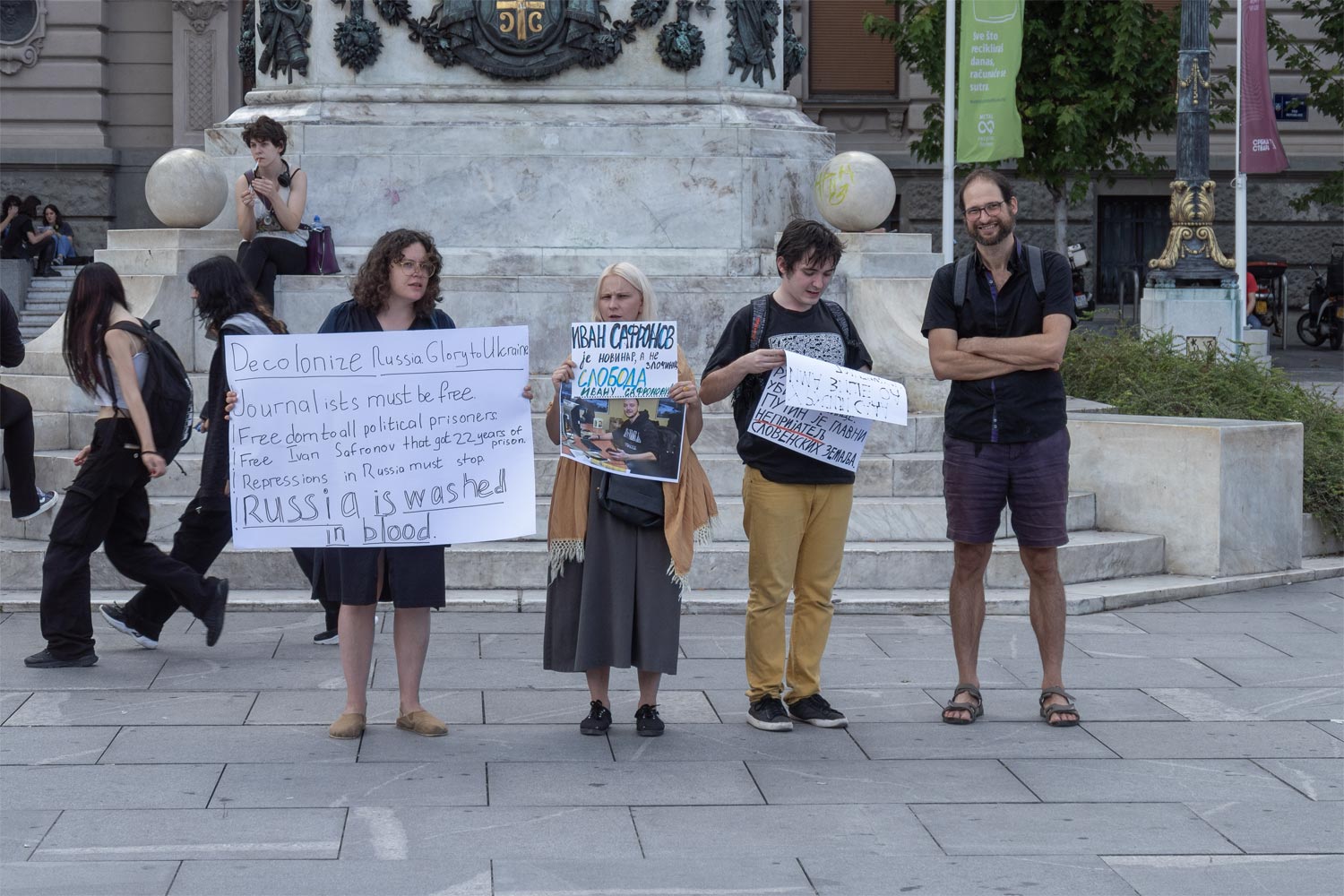
The reader would say he is tired of politics. In that case, I don’t recommend going to Belgrade at all. Serbia is highly politicized. Protests take place here every week, slogans are literally everywhere, and almost every monument is either Gavrilo Princip or Nicholas II.
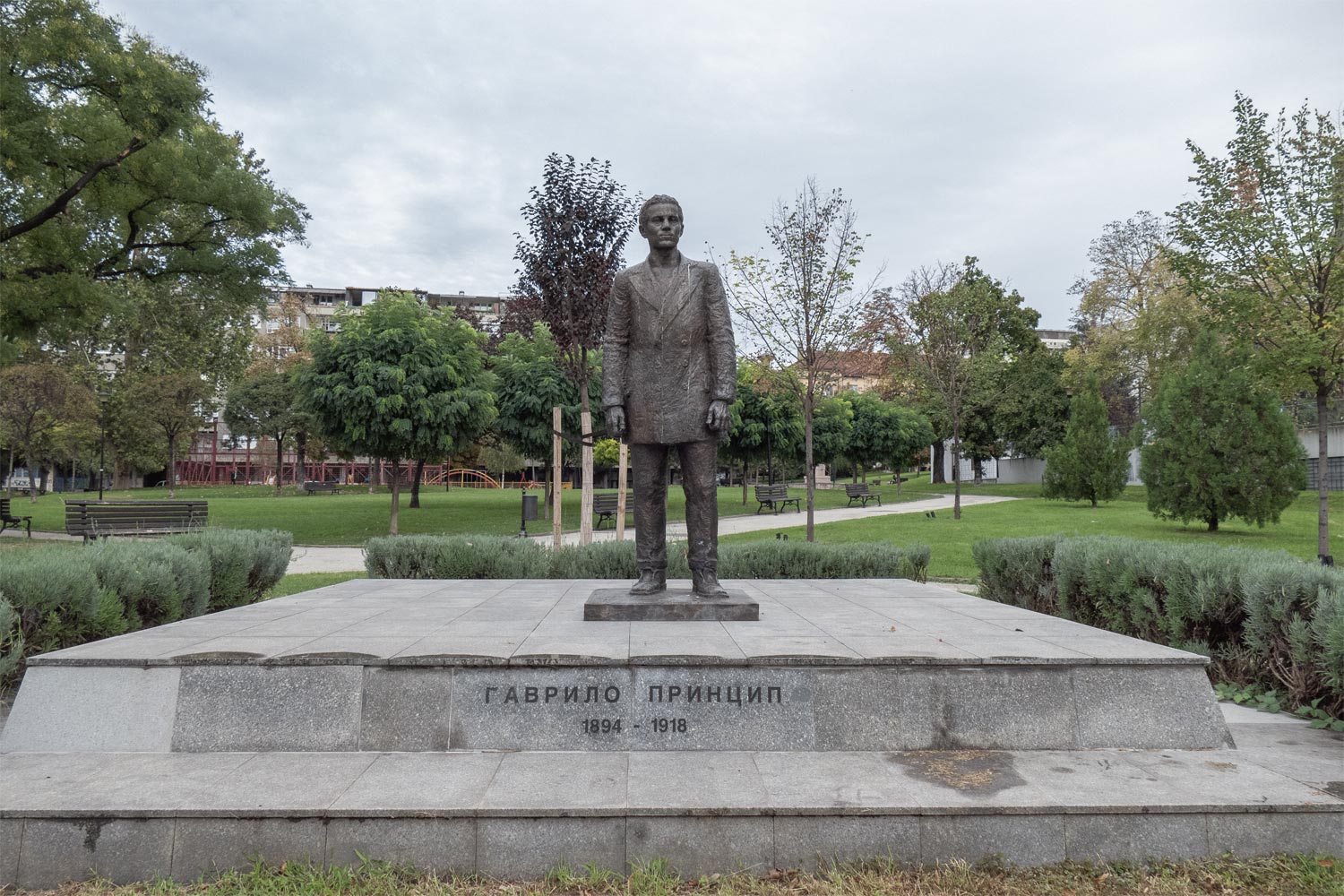
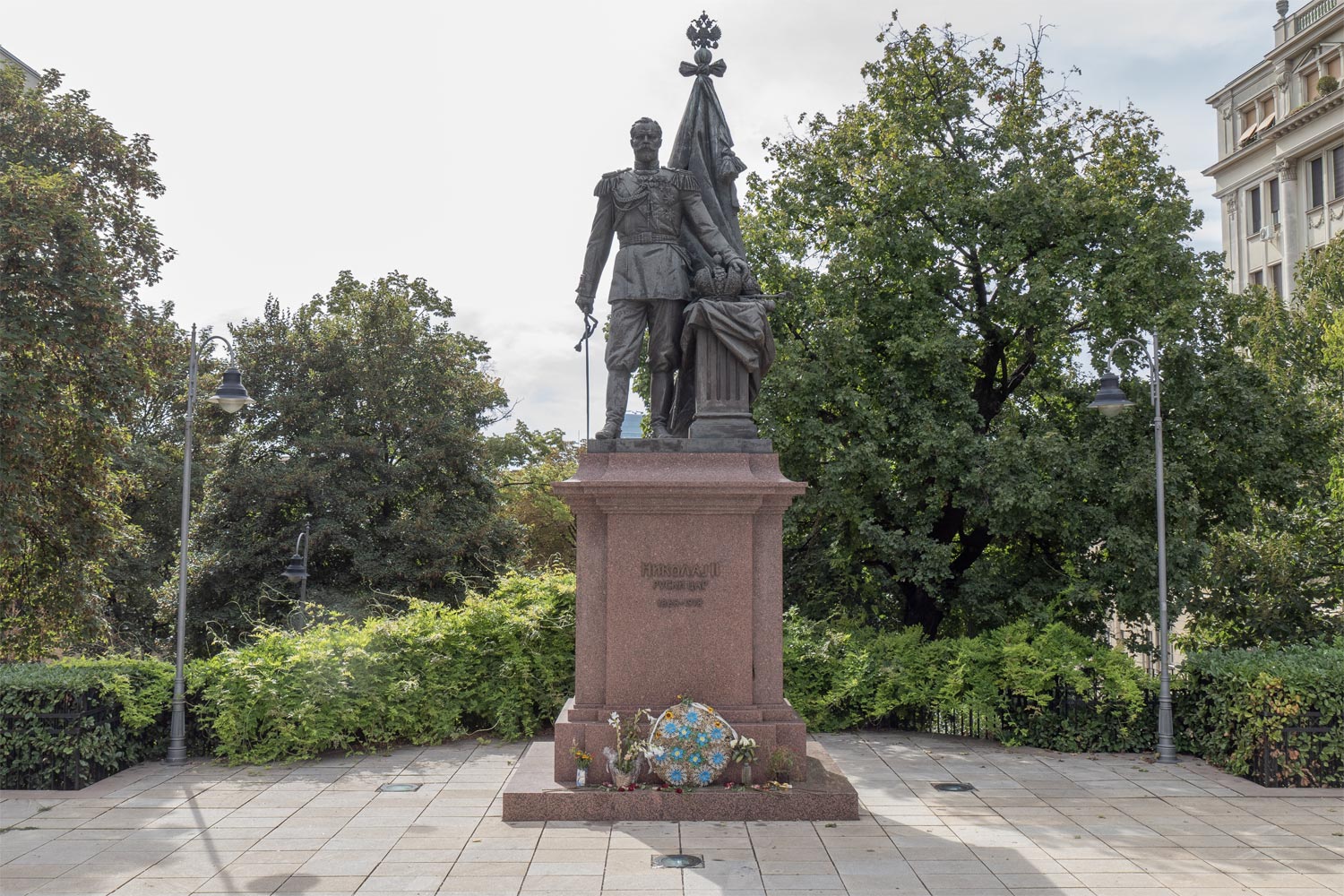
However in 2022, Serbia saw a significant influx of Russian immigrants fleeing from the war. Russia has always been an ally of Serbia, so Serbs do not support sanctions, easier open bank accounts for Russians and provide residence.
In turn, Russian immigrants praise Belgrade. It’s understandable that they are not in a position to be picky. Besides, there are pleasant places in Belgrade.
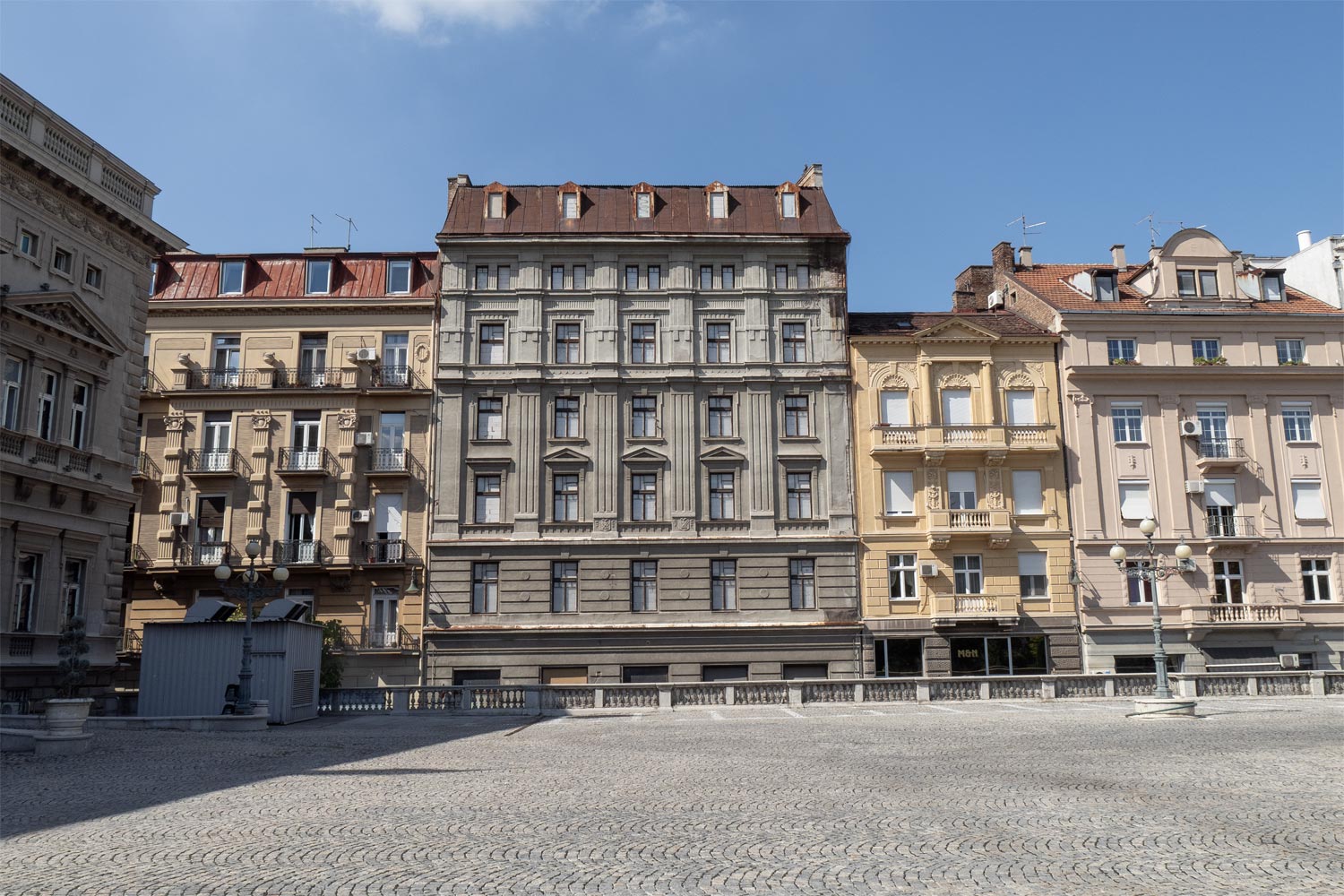
For example, the beautiful Parliament building in the Neo-Baroque style.
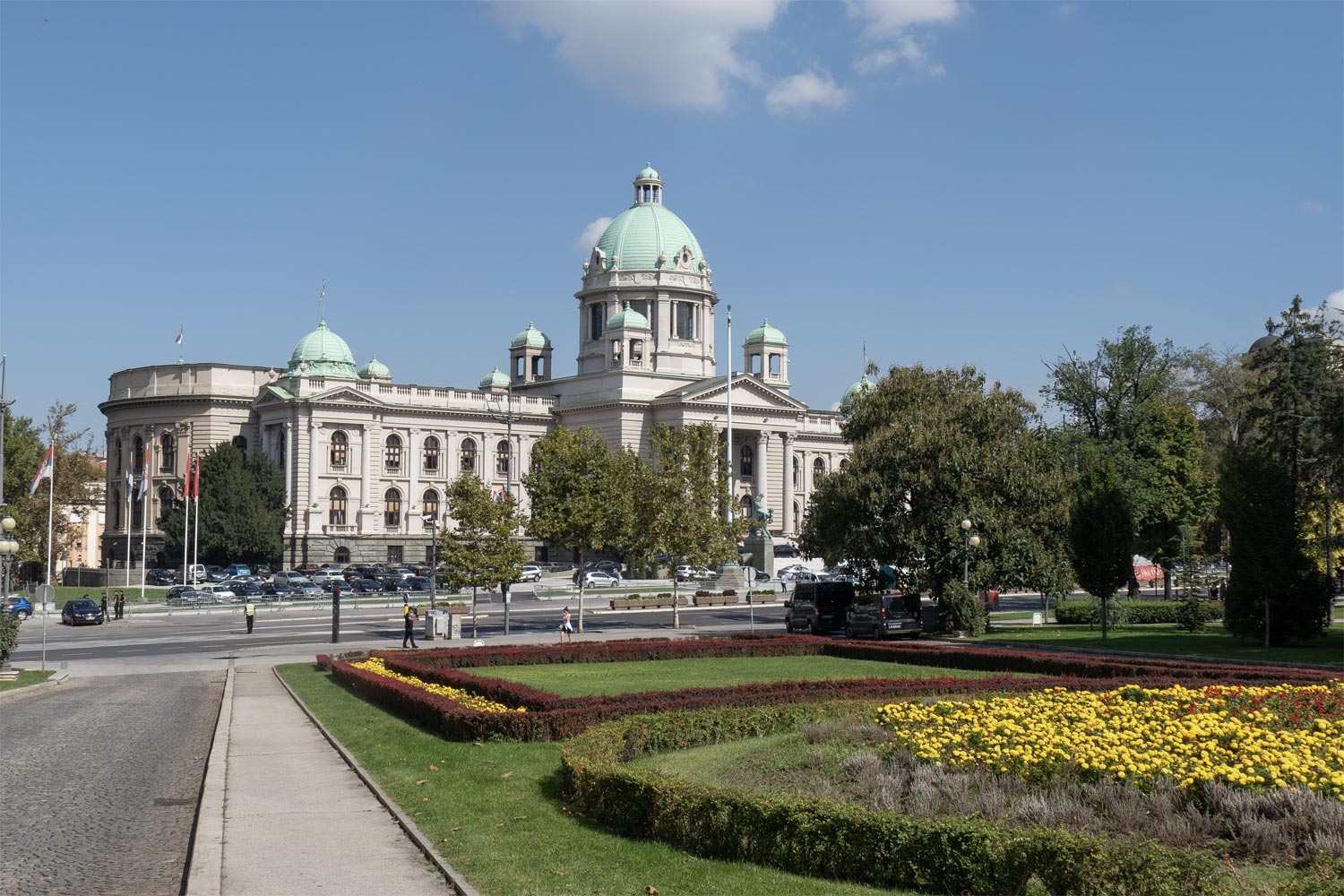
Or the charming Hotel Moscow in the Art Nouveau style.
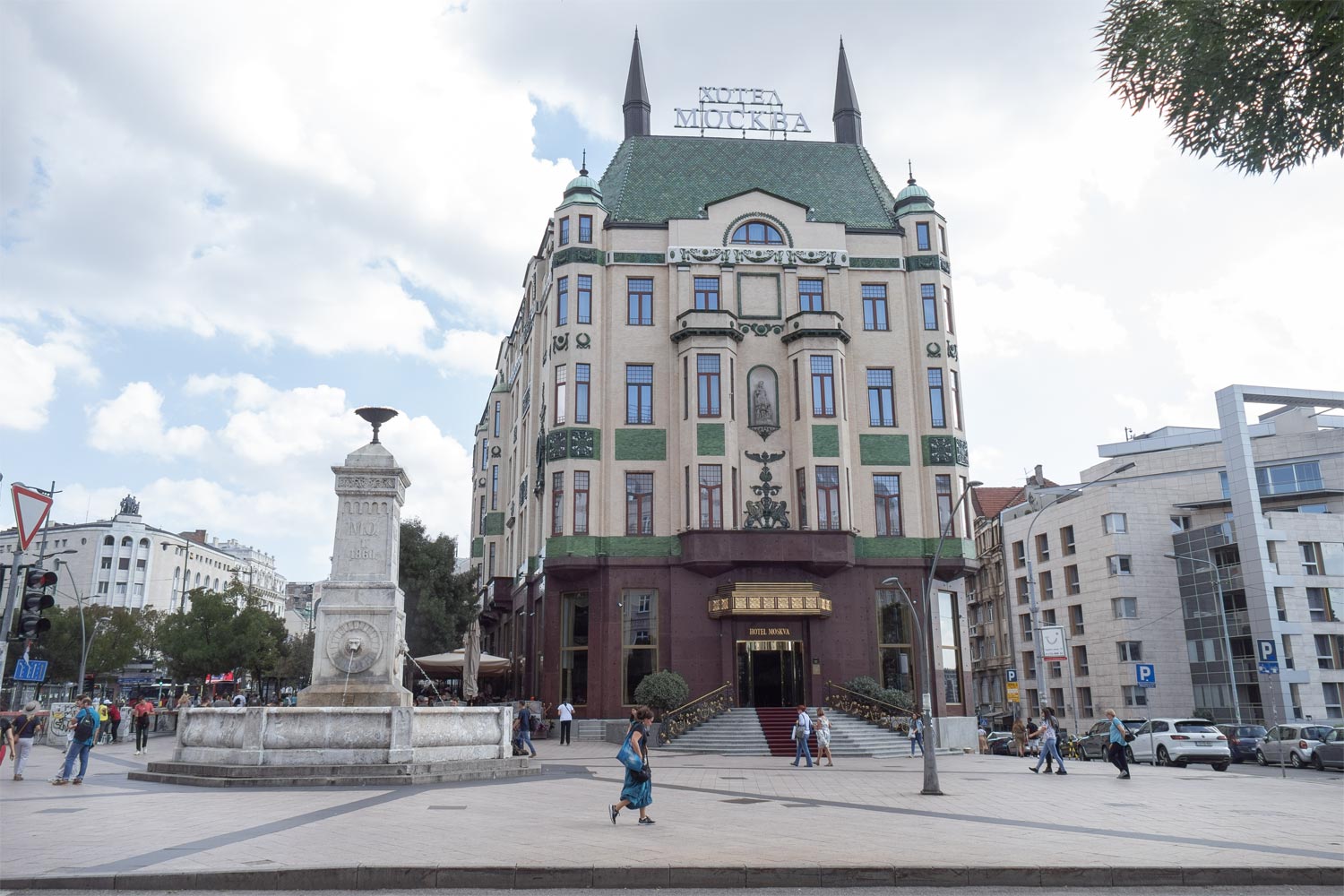
Or the magical museum building in the Neo-Renaissance style.
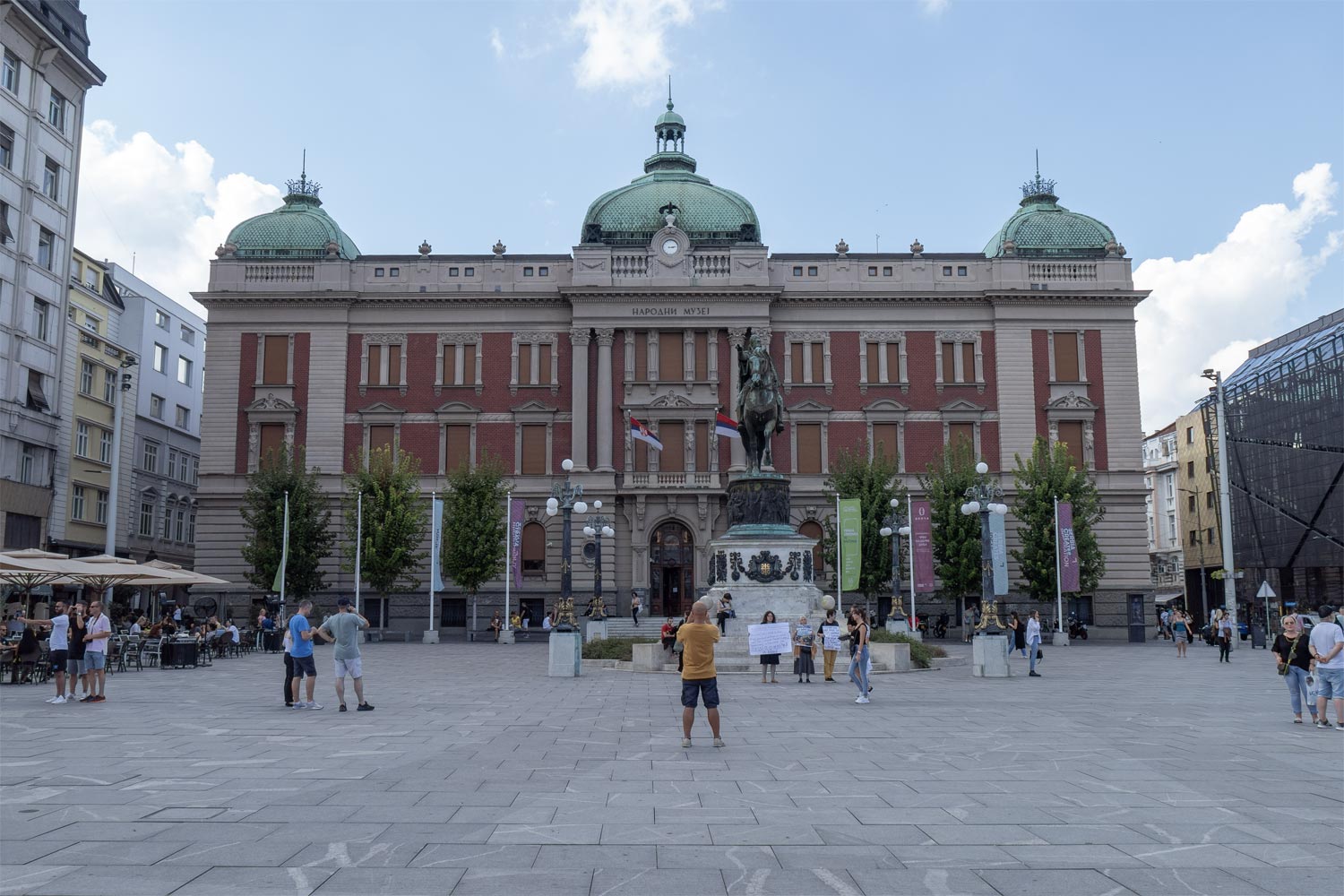
Unfortunately, there are very few of these pleasant places, and they are simply engulfed in ruins and dirt. Even in the center of Belgrade, people walk through such horrendous underground passages.
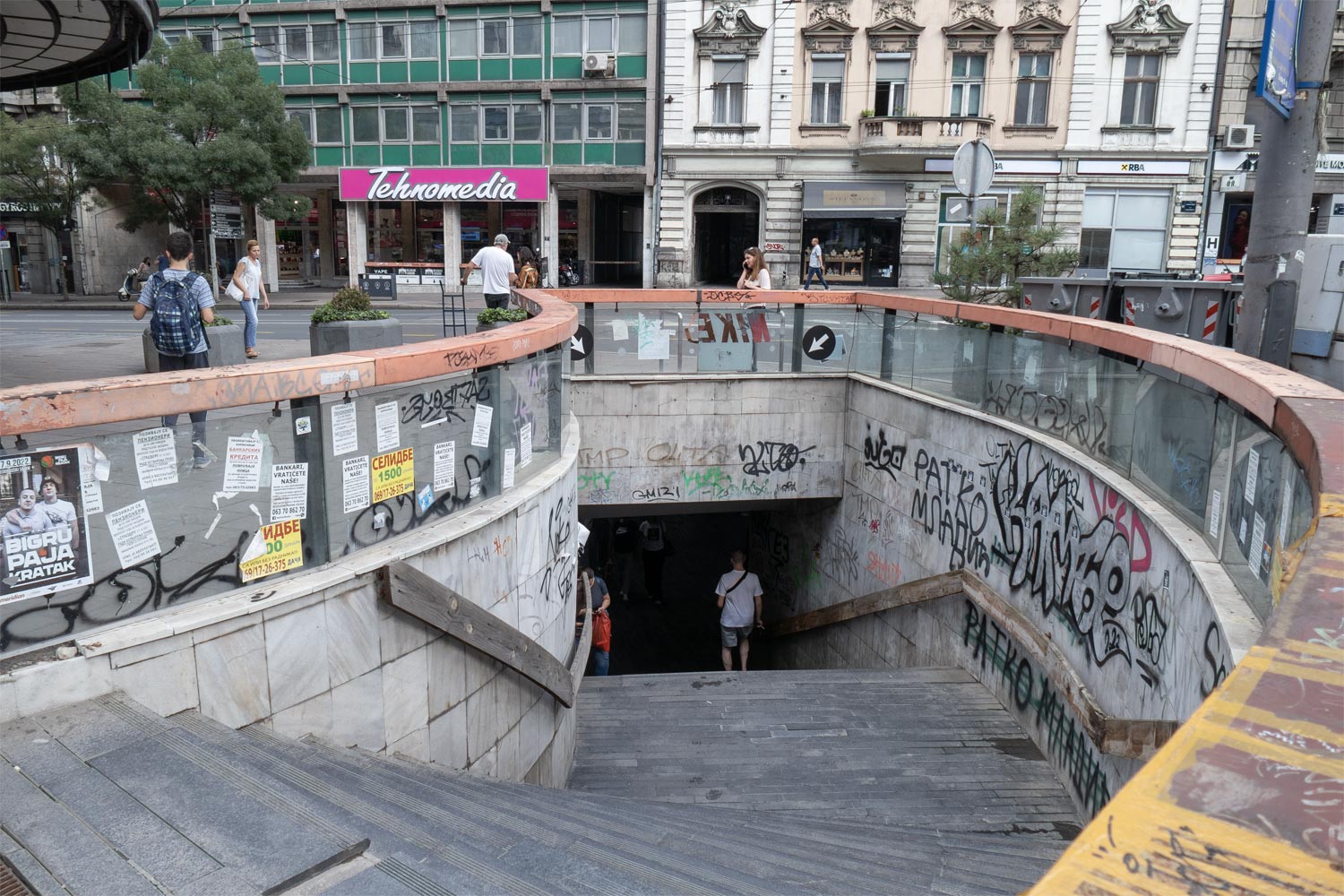
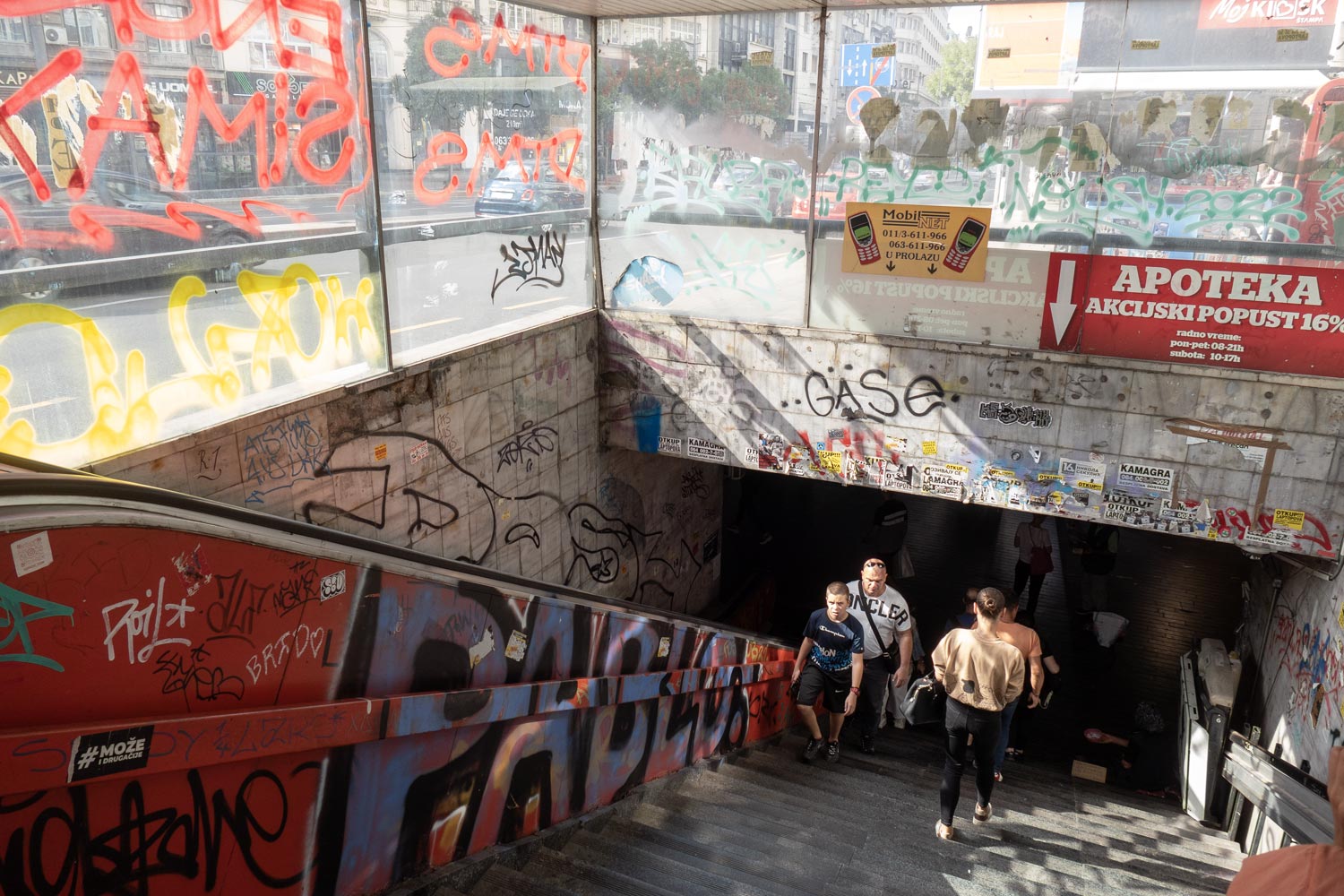
A certain “Cultural Center of Belgrade” is covered in graffiti and littered with advertisements. The magnificent floor-to-ceiling windows are covered with some cheap paper.
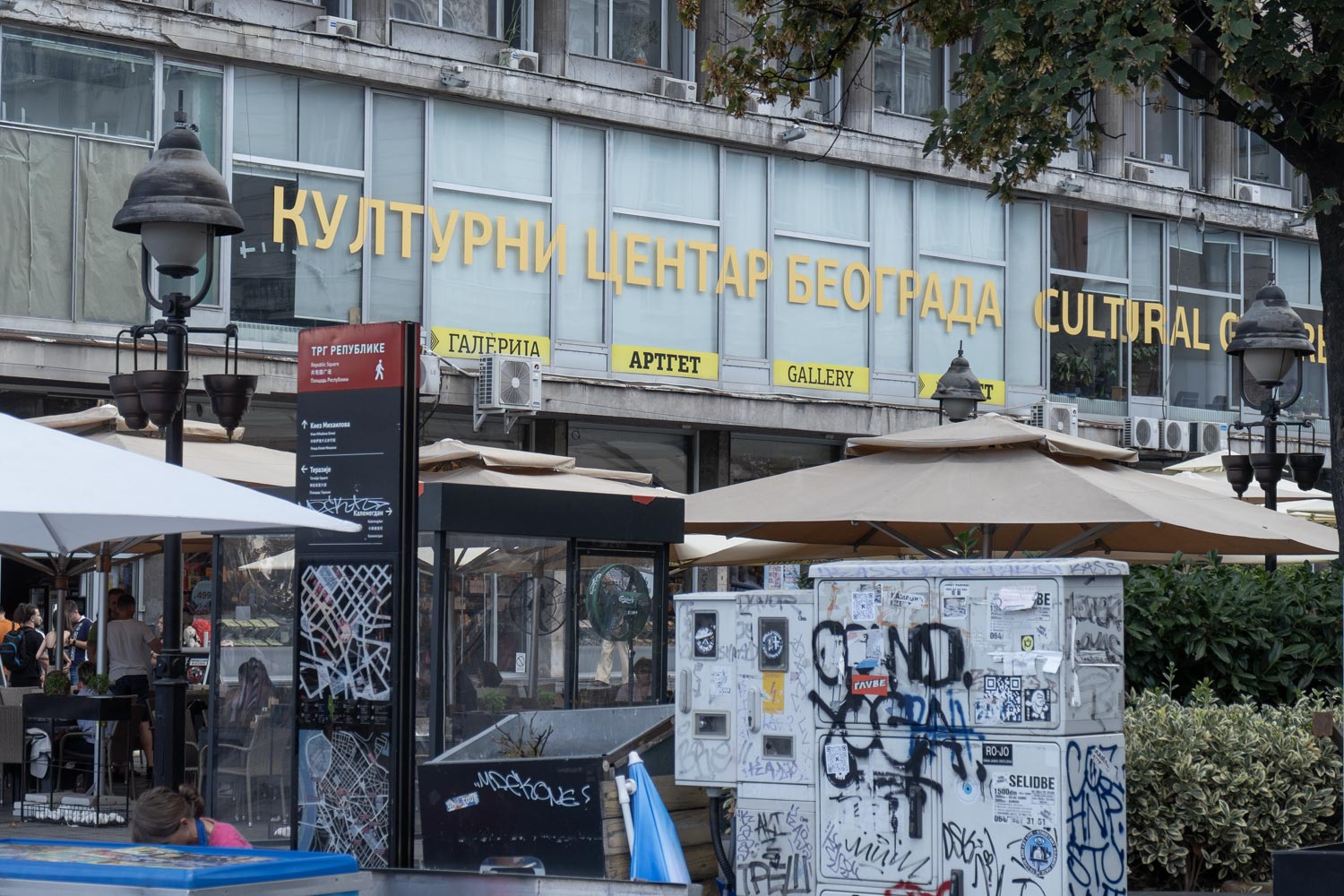
Belgrade holds an exhibition of air conditioners. They are literally covering everything, even historical buildings.
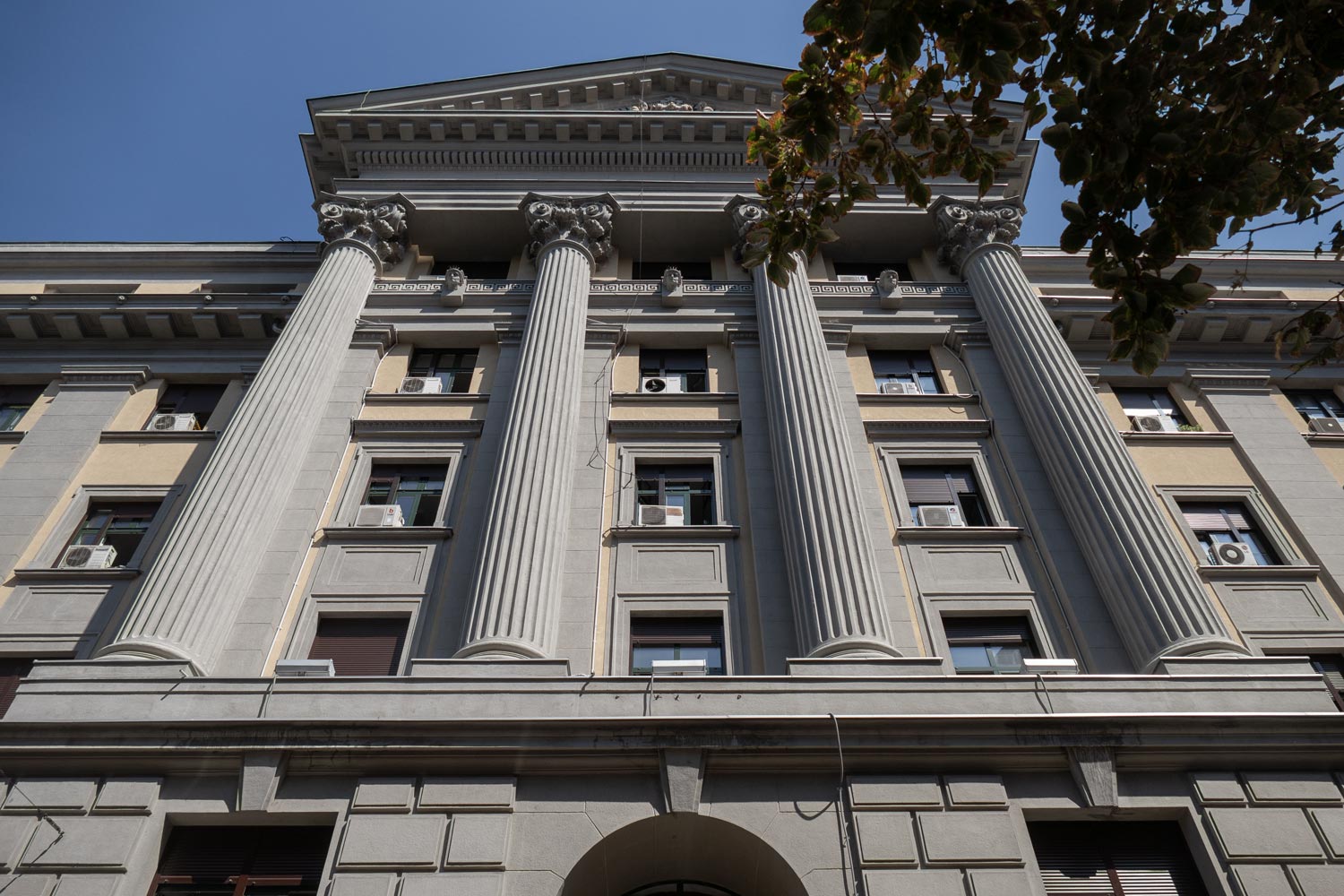
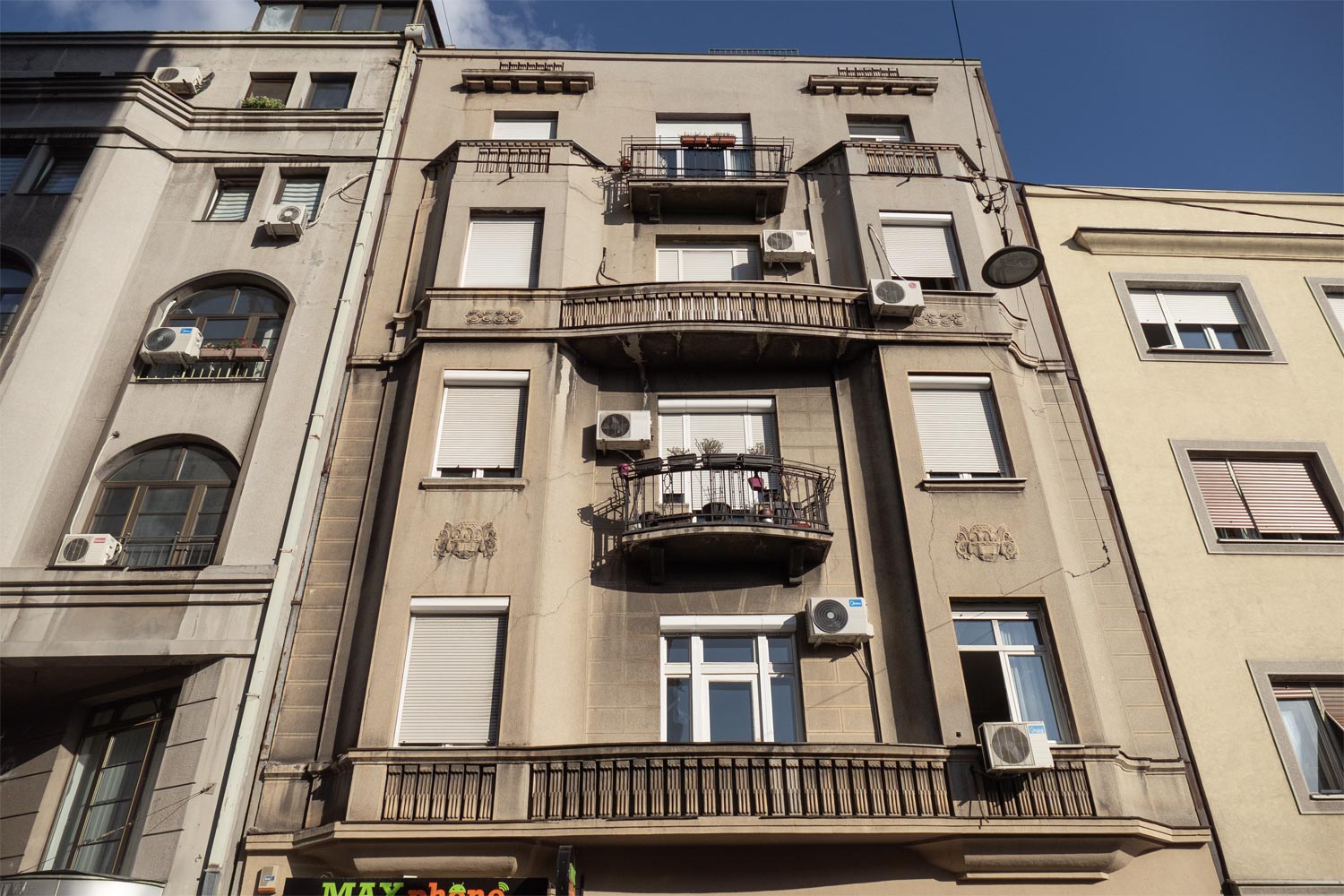
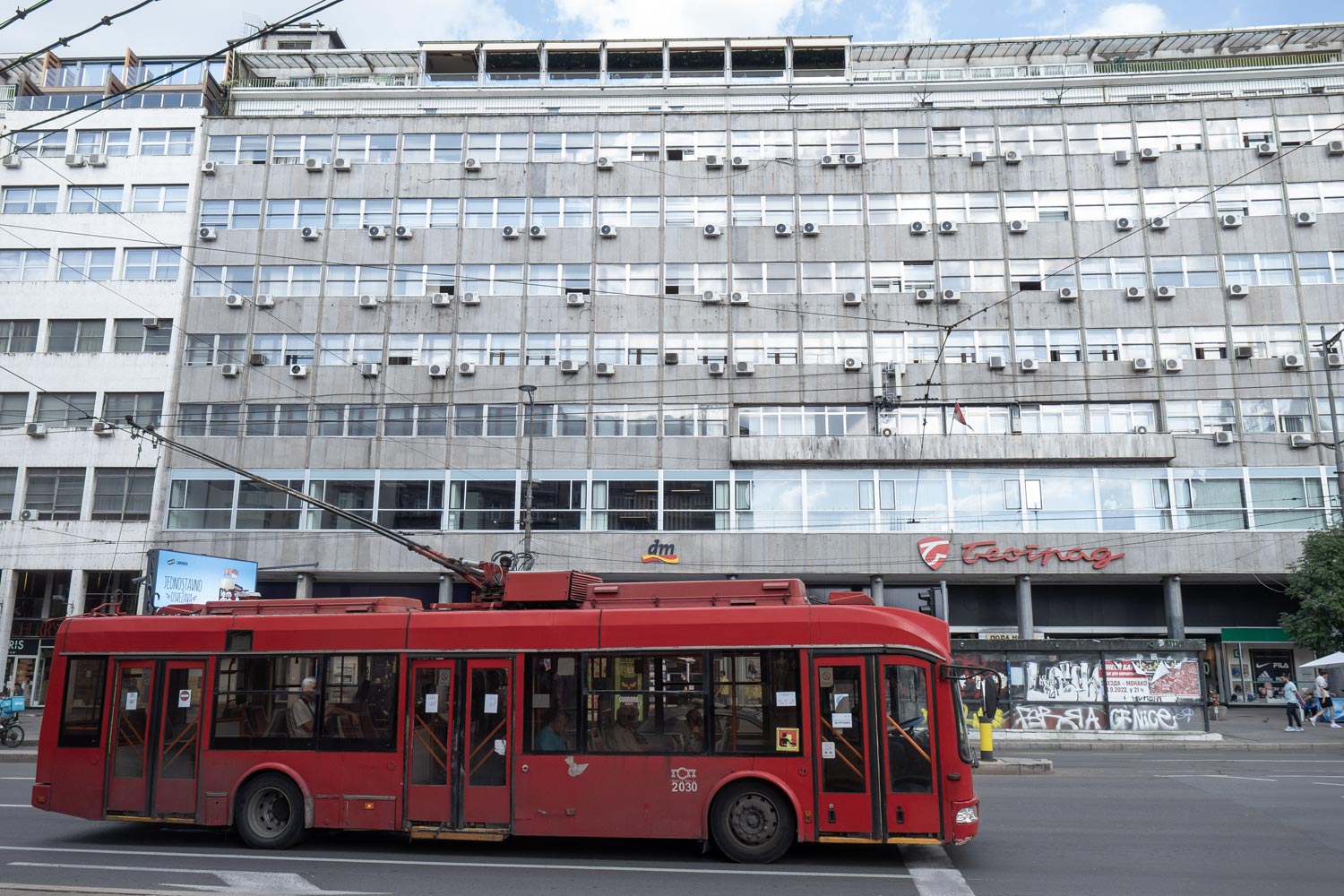
The transportation is in a terrible condition. Apparently, the authorities hired artists to decorate the decaying tram, but the result turned out to be extremely poor.
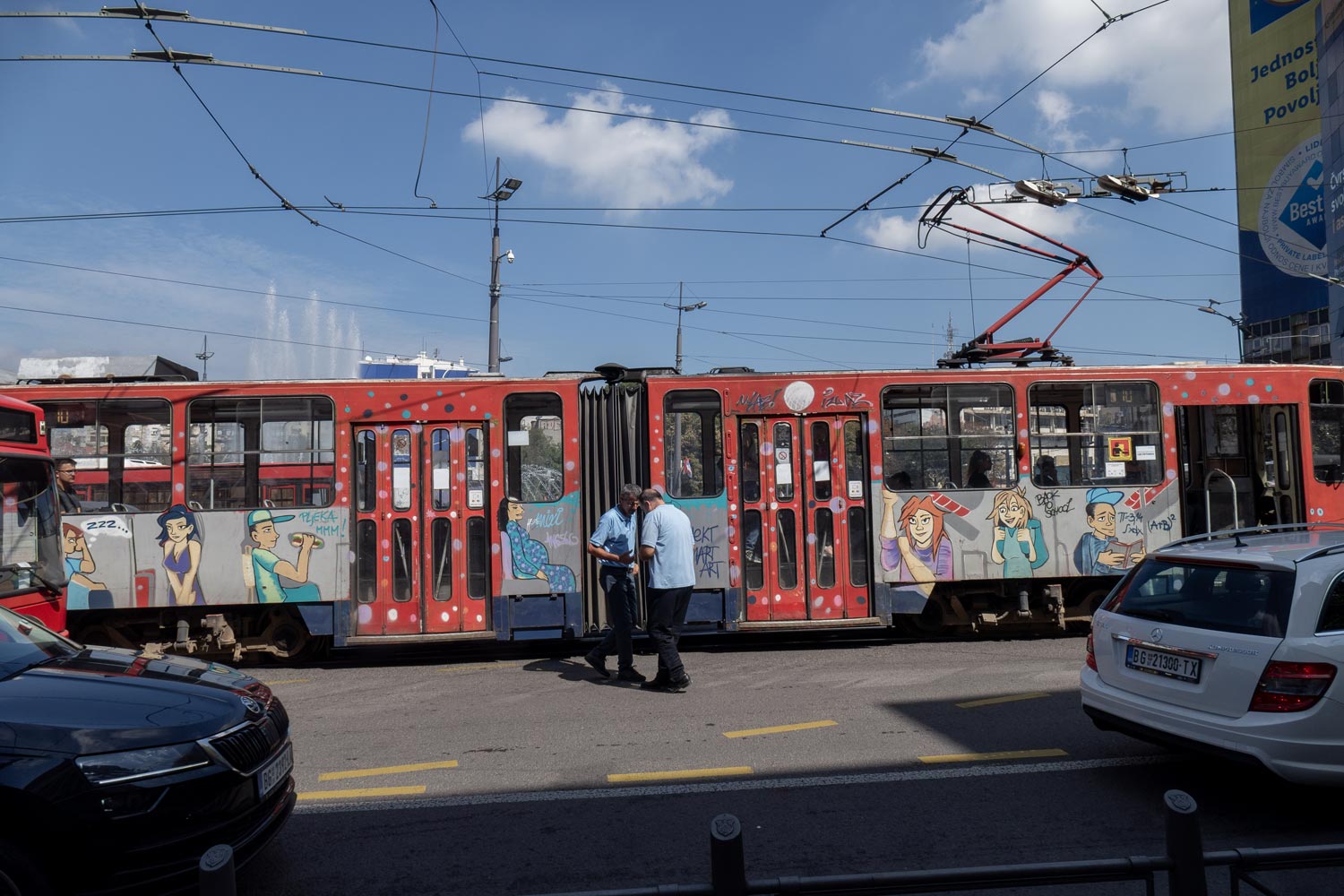
The Saint Sava Temple, which looms on the horizon from many places in the city, turned out to be a dreadful wannabe.
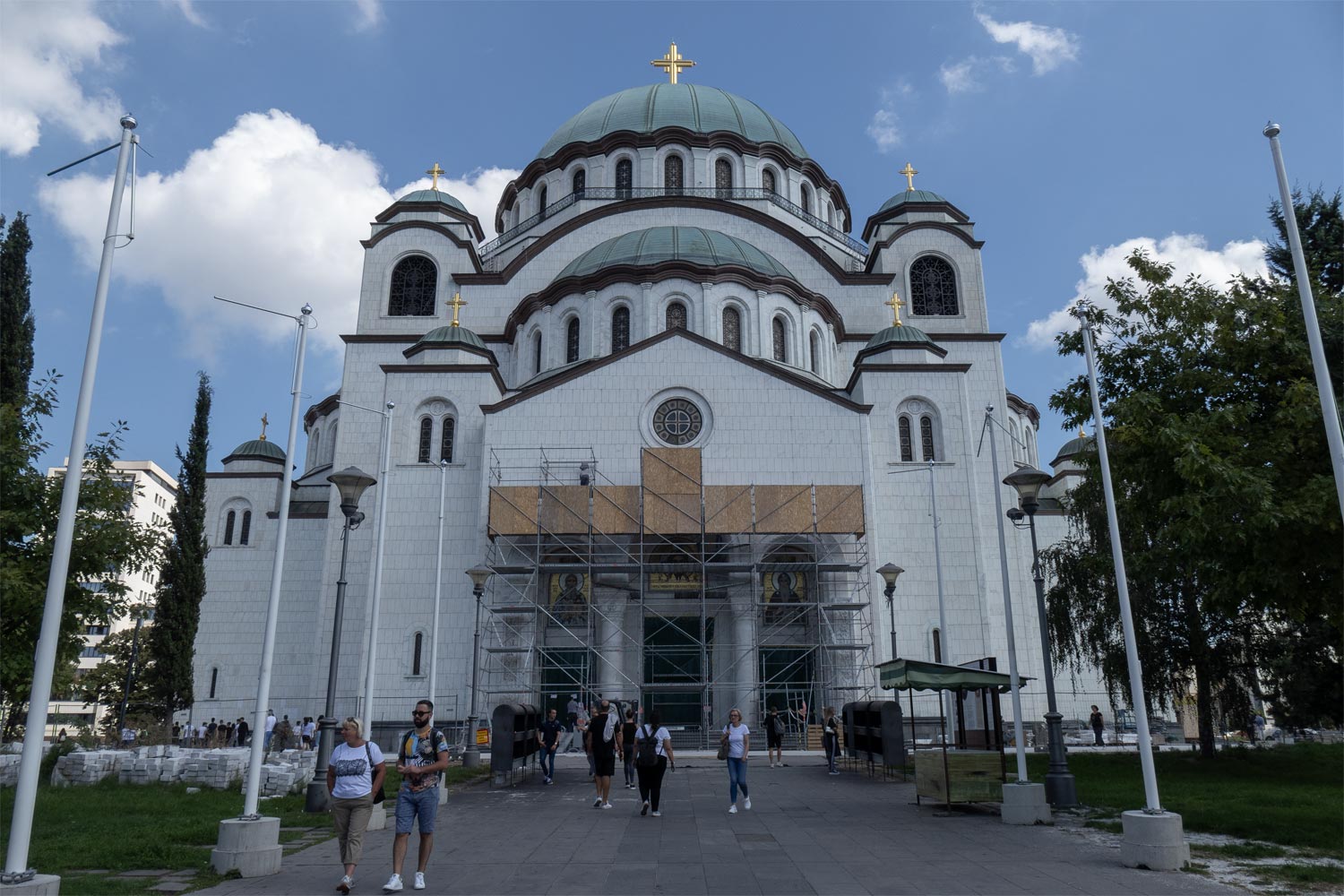
The construction of the temple began way back in 1935 and was only completed in 2021. Apparently, by that time, they had forgotten that the porch was built at an angle to the square. When they started laying the tiles, it turned out that they needed to be cut. So they just abandoned it, leaving a lake under the tiles.
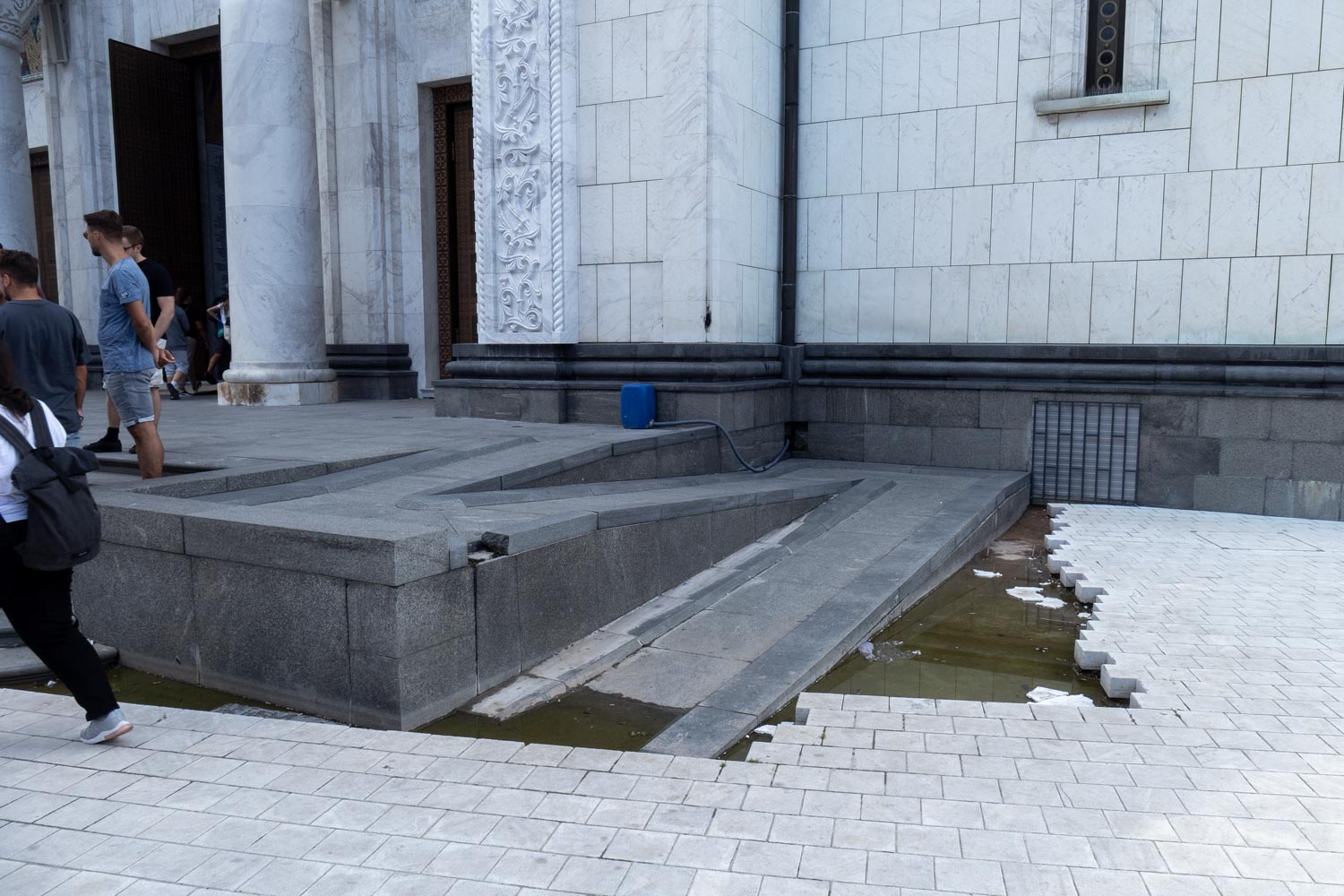
The sidewalks in Belgrade are very poor. They are placed not where people walk, but where the architect drew them. As a result, all the grass has been trampled. After rain, it turns into mud. Pedestrians spread this mud on the sidewalk, and then it dries up and becomes dust.
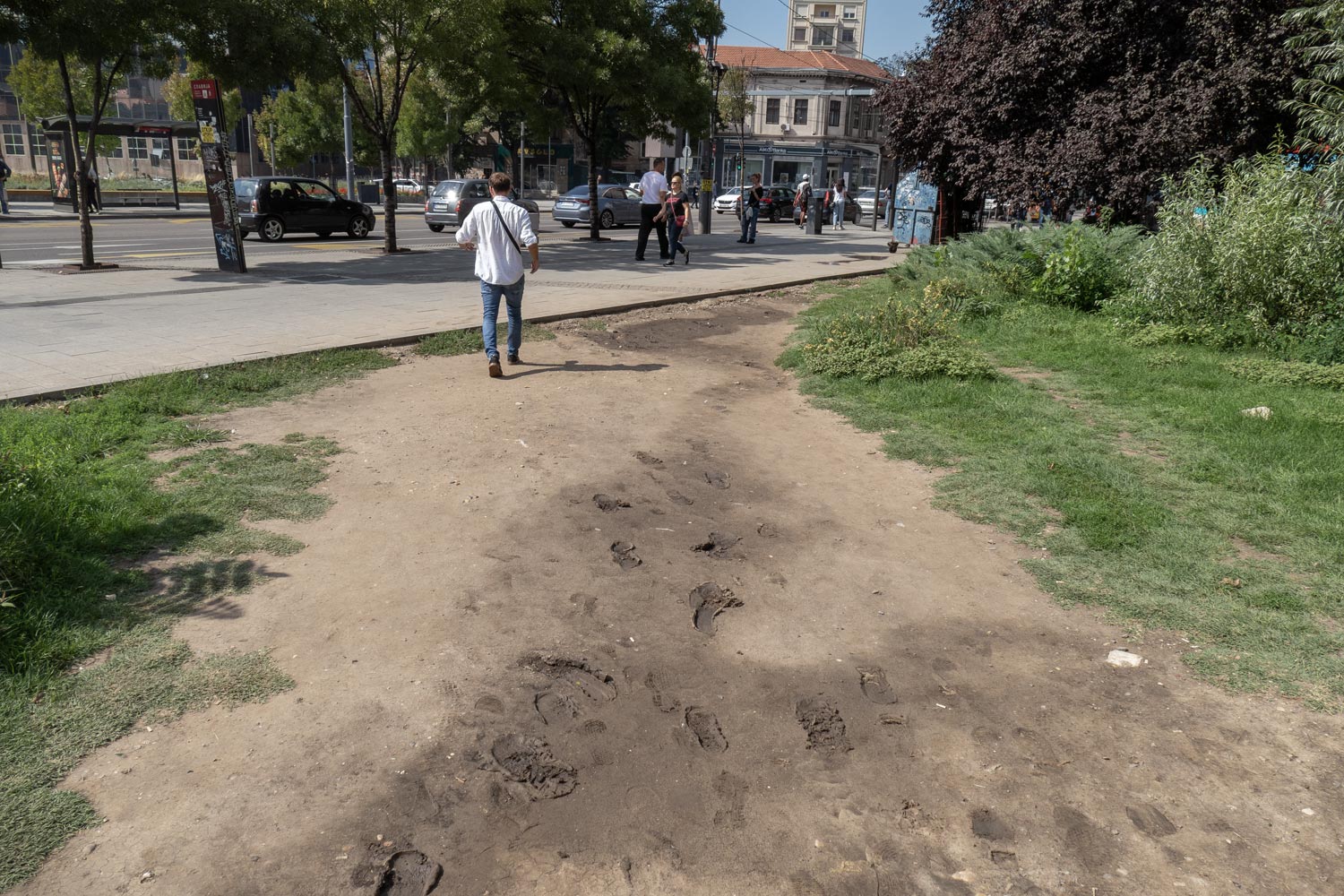
Then the wind picks up this dust and cars scatter it. As a result, windows and walls throughout Belgrade are covered in dust.
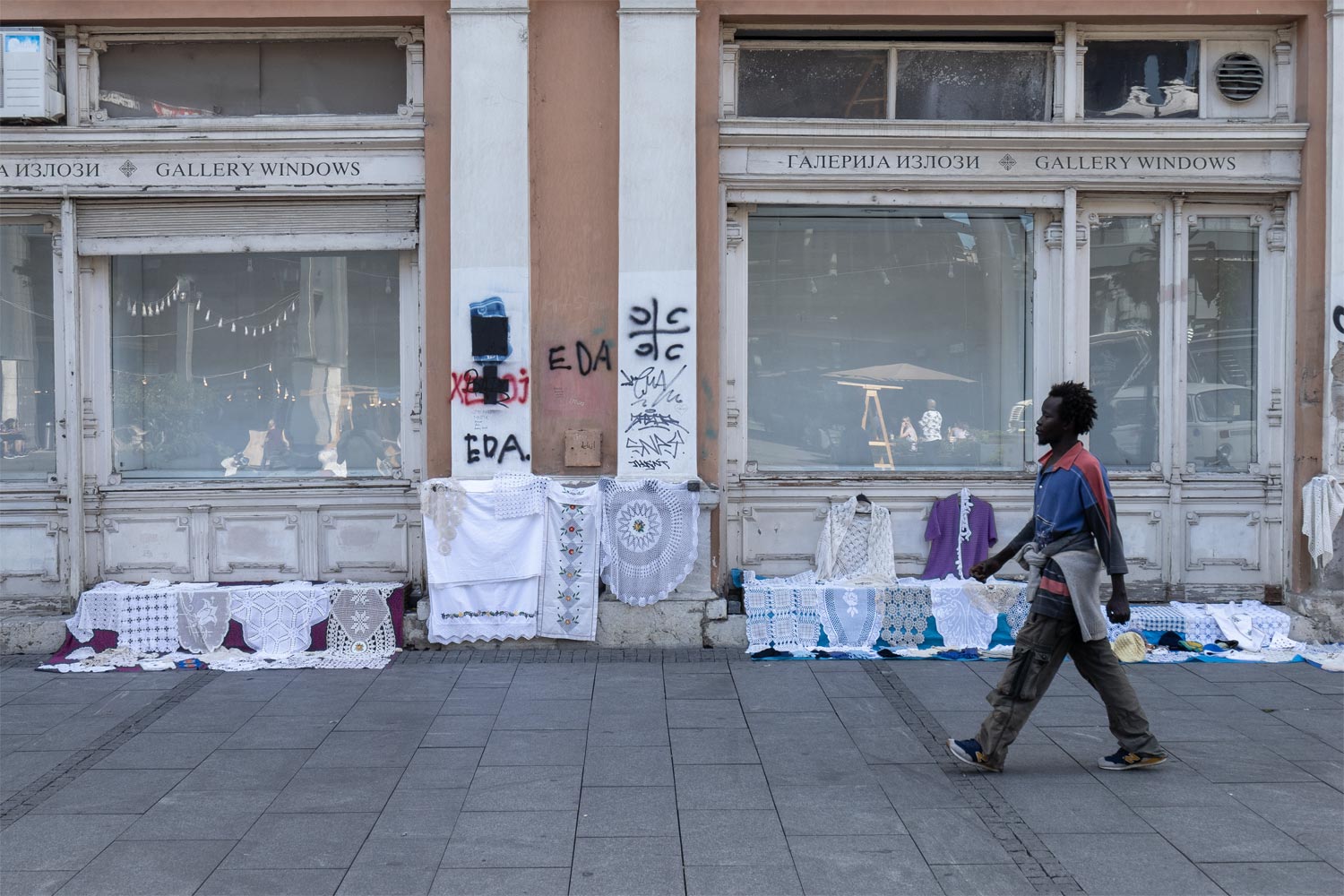
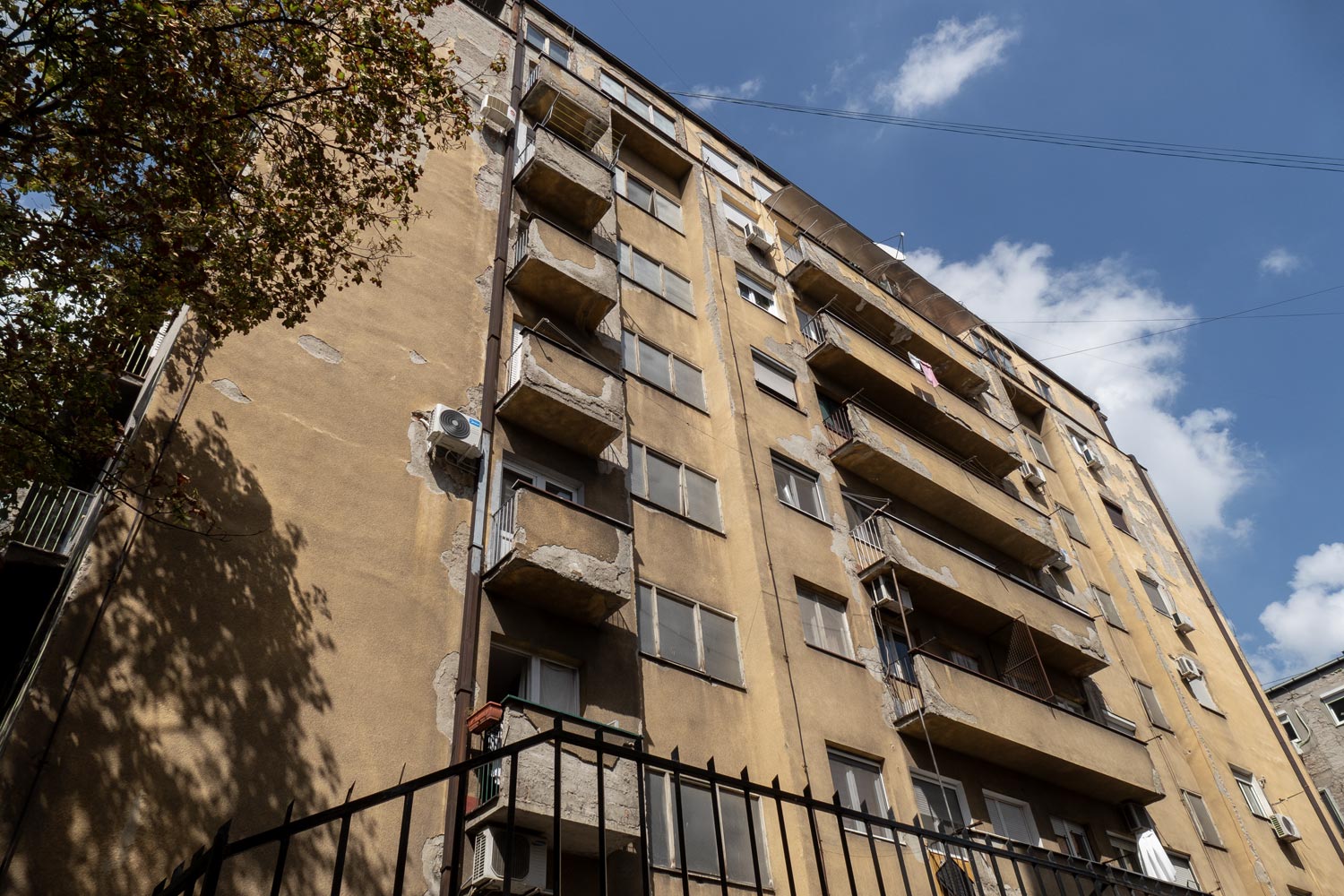
Belgrade regularly breaks records for air pollution. In Serbia, coal is still being used for heating, so the country is enveloped in smog during winter. This smog settles on walls, making all the buildings in Belgrade look as if someone splashed a bucket of water from mopping on them.
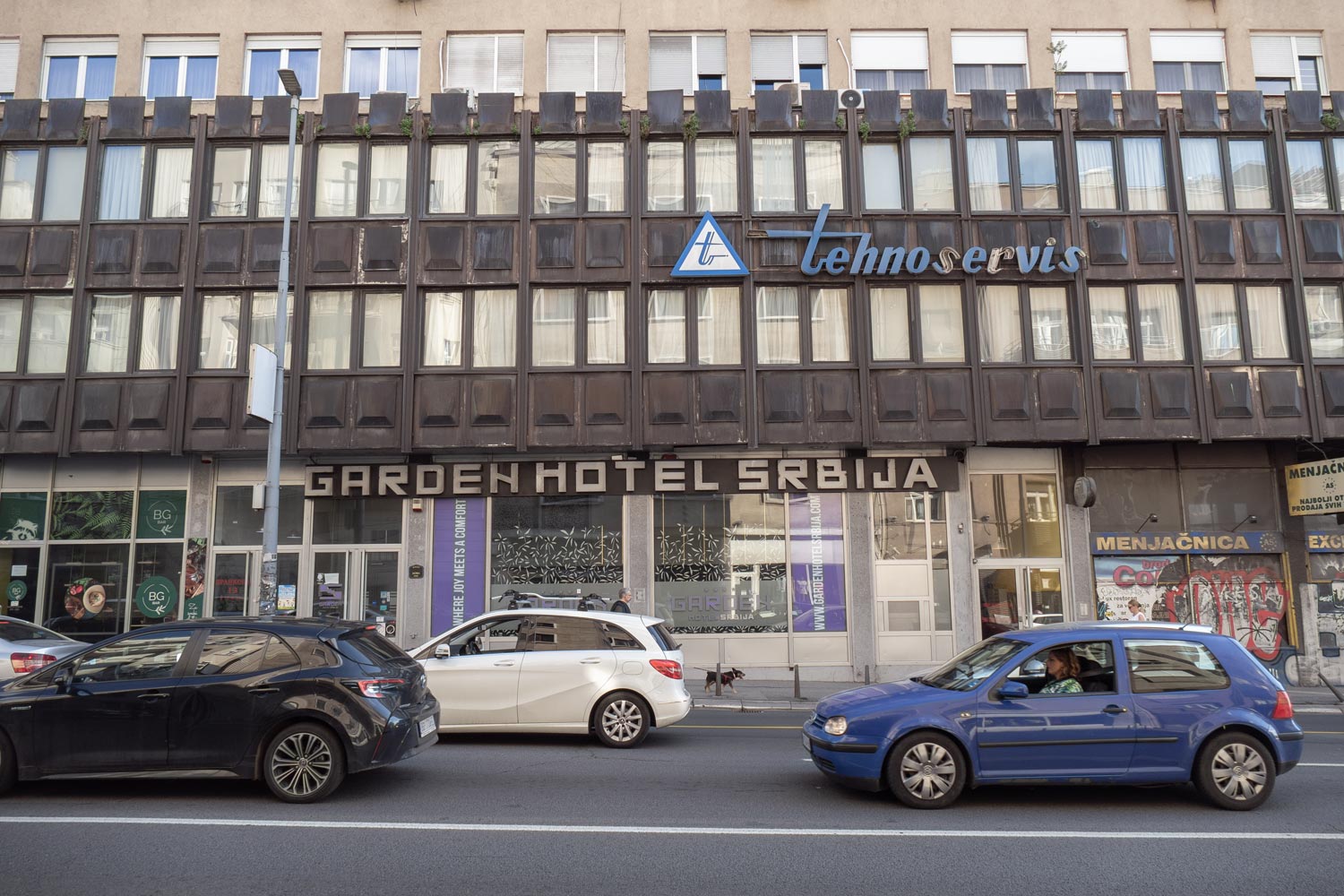
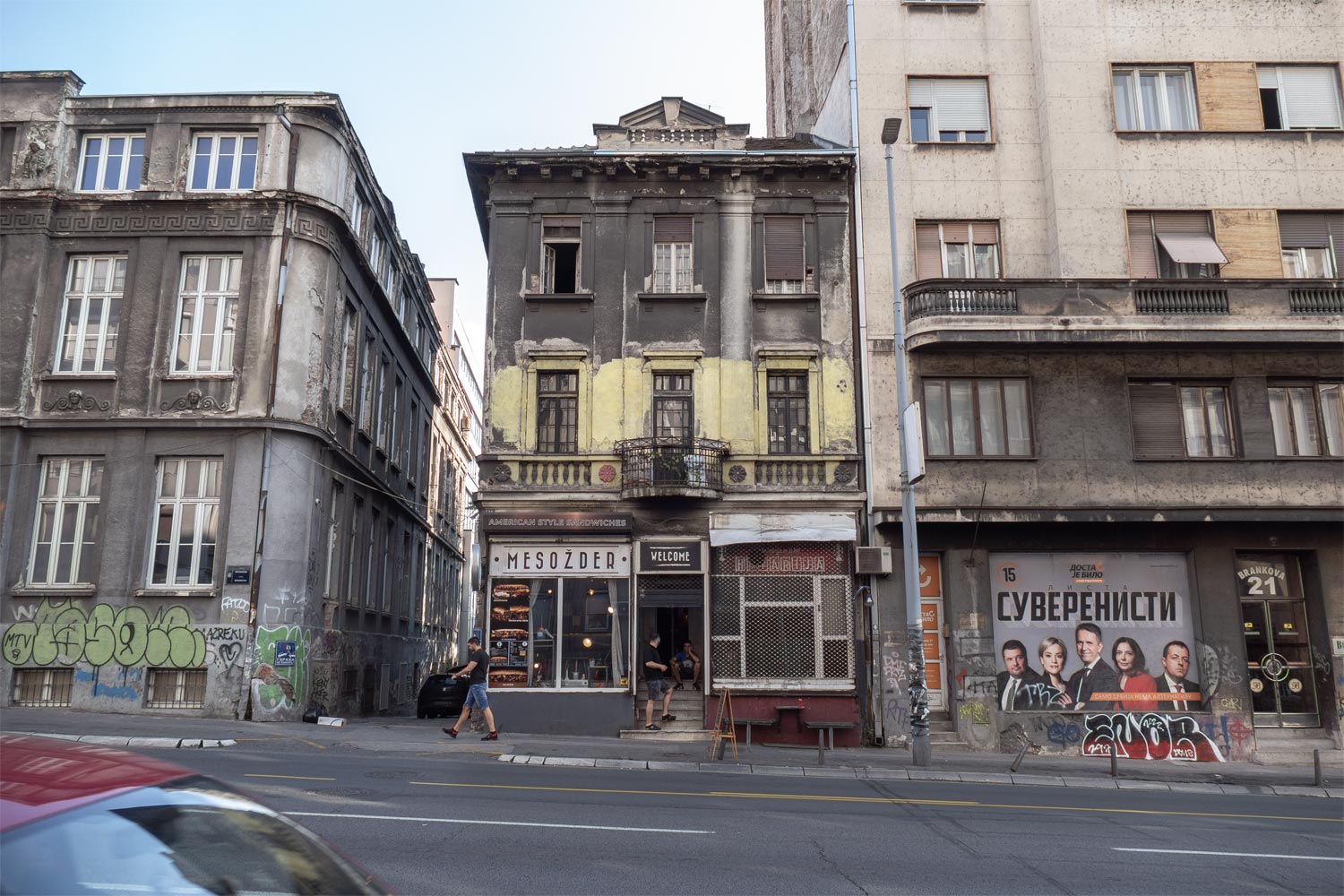
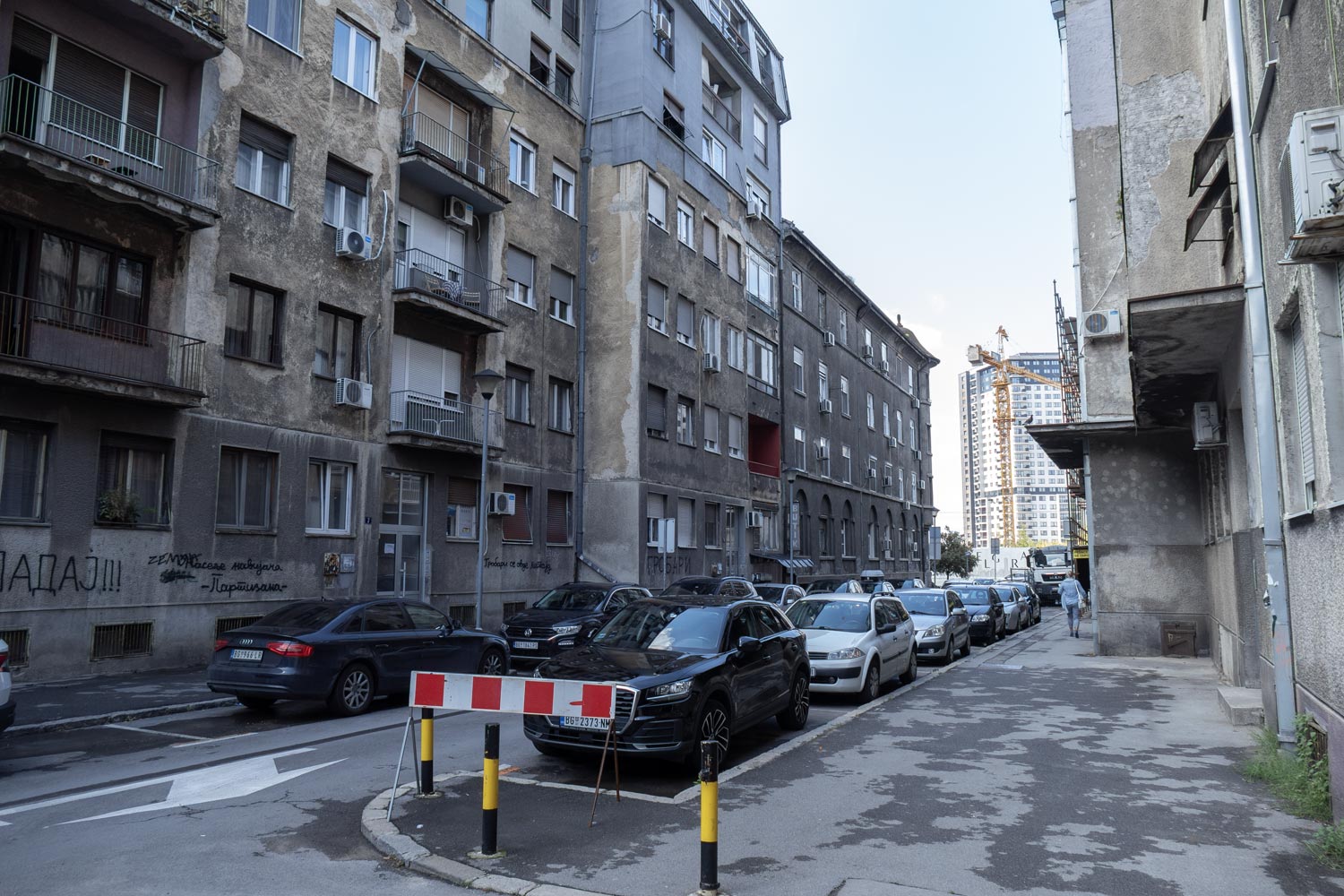
The city is in a terrible state. The paint is peeling off the walls, many buildings, even in the center, are ragged.
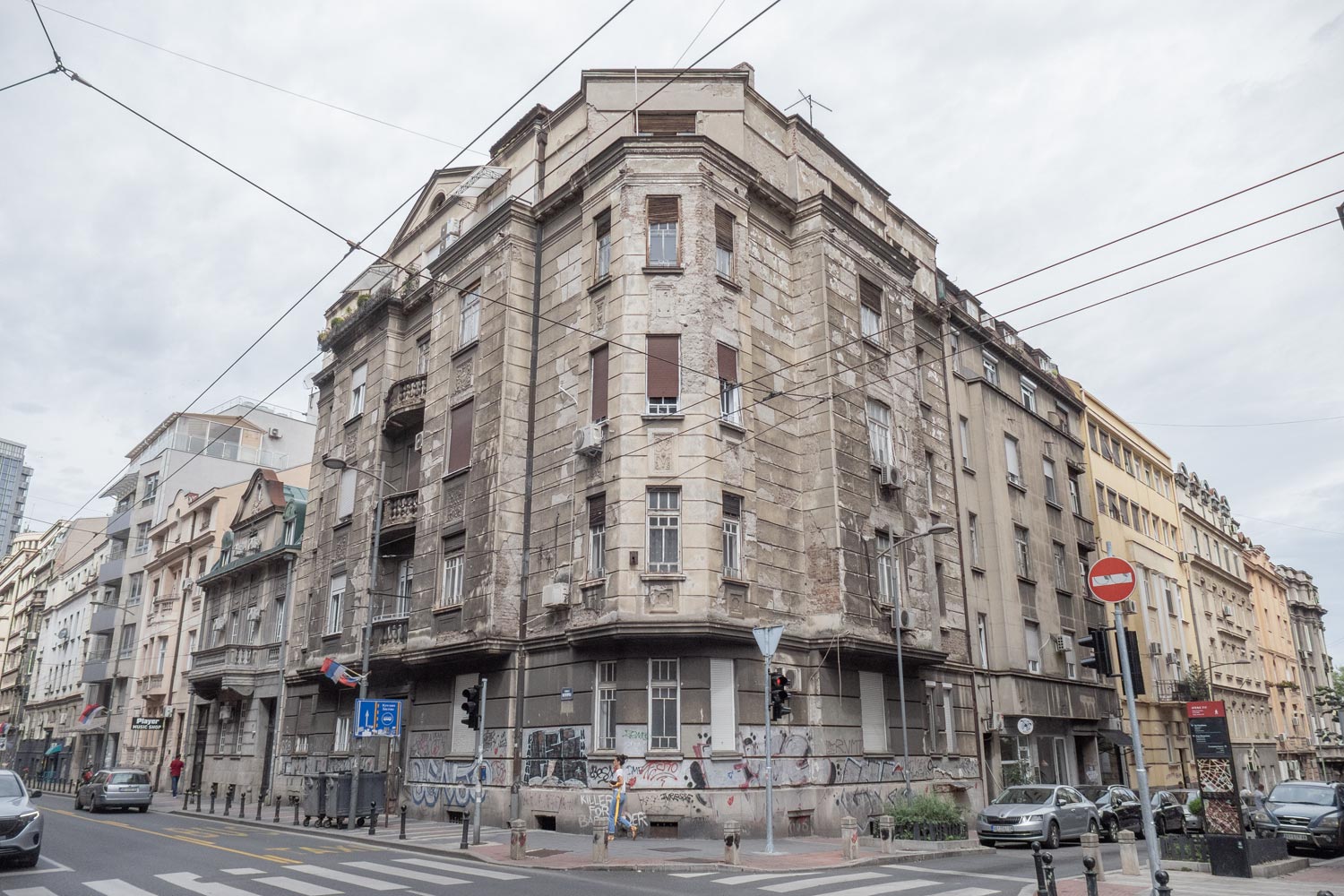
The asphalt is cracked, the steps are crumbling, the lamppost is at an angle and will soon fall. This is the porch of the Ministry of Foreign Affairs. What a shame.
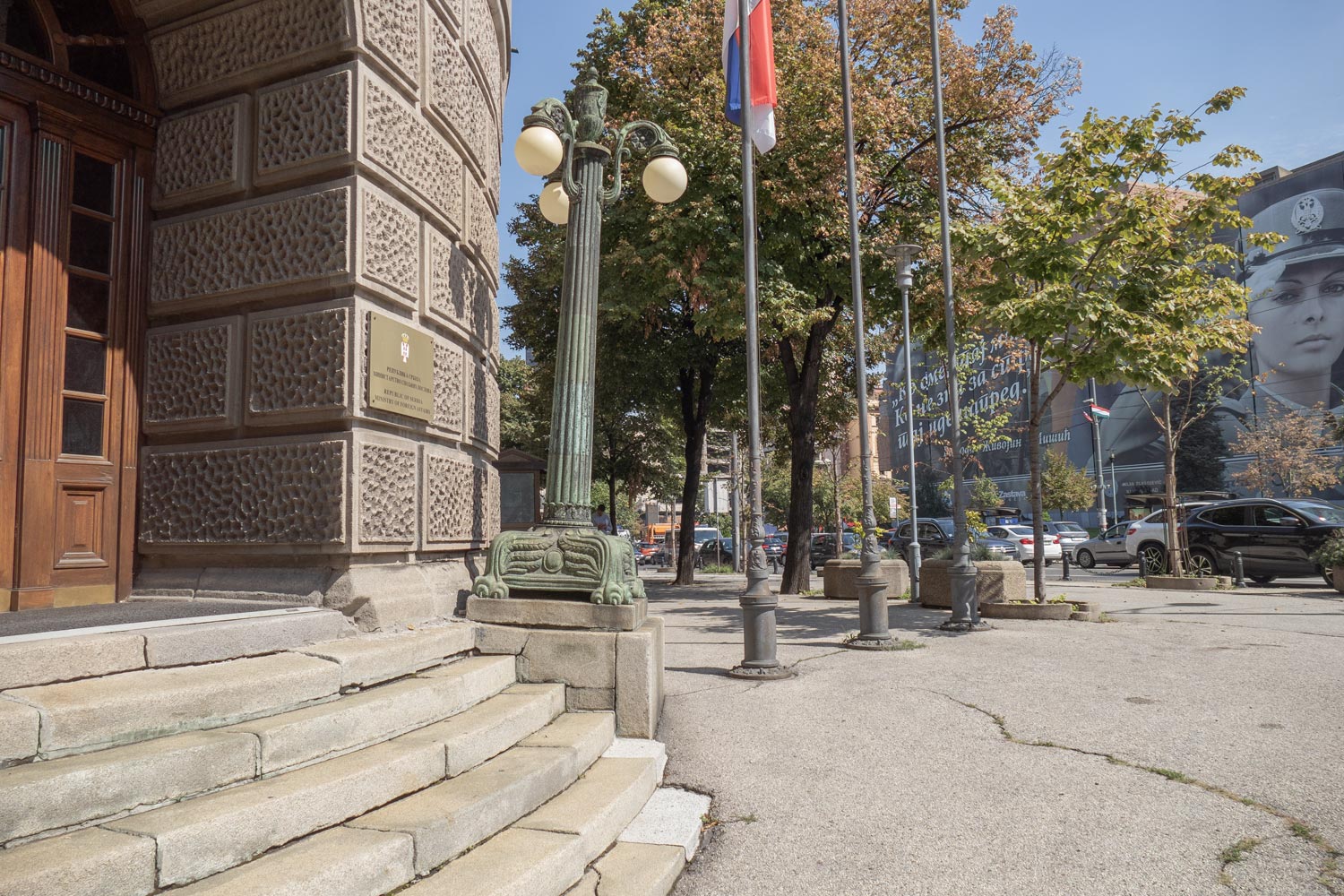
But most importantly, Belgrade is completely defaced with inscriptions, graffiti, and drawings on the walls. You can only walk around Belgrade without looking to the sides.
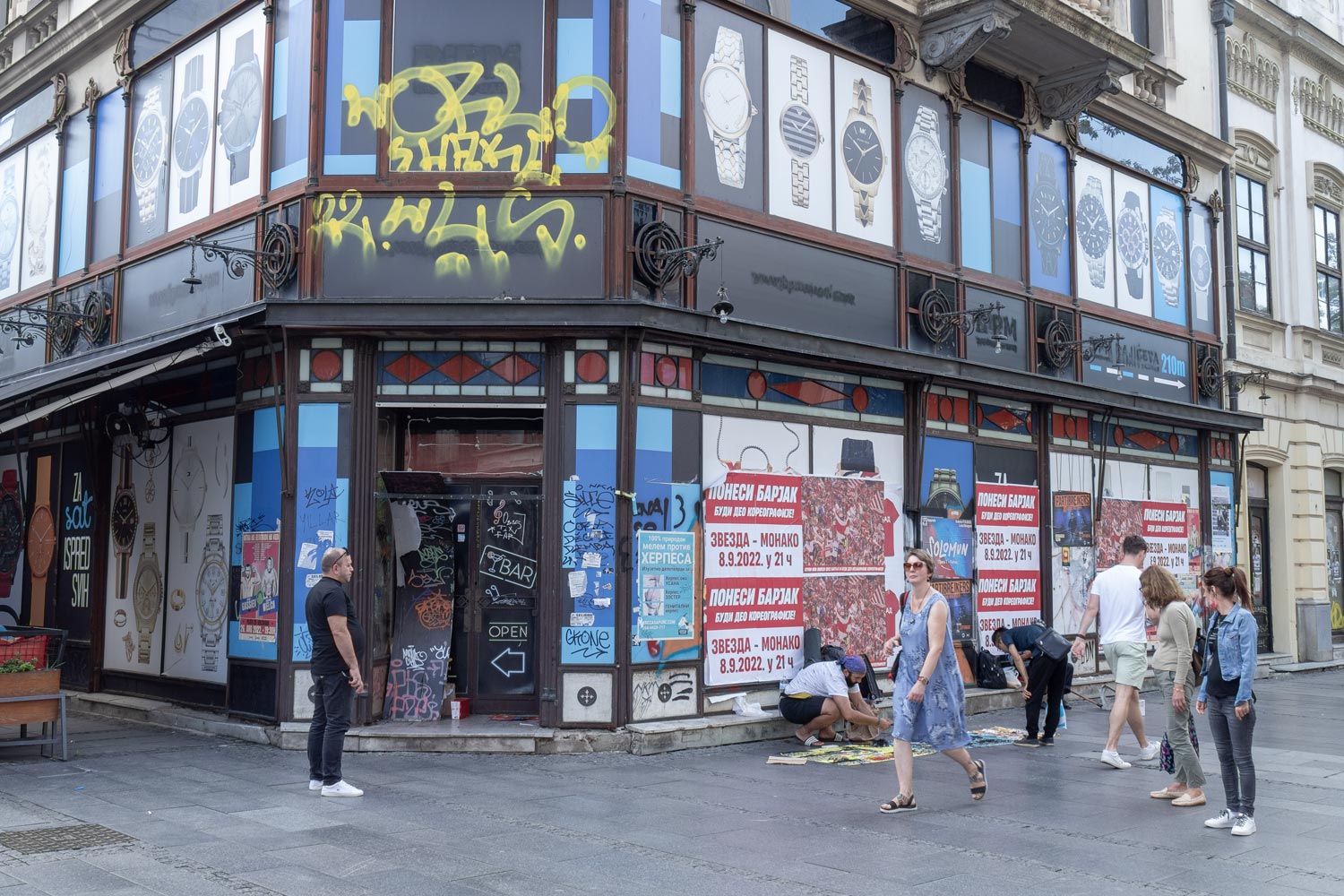
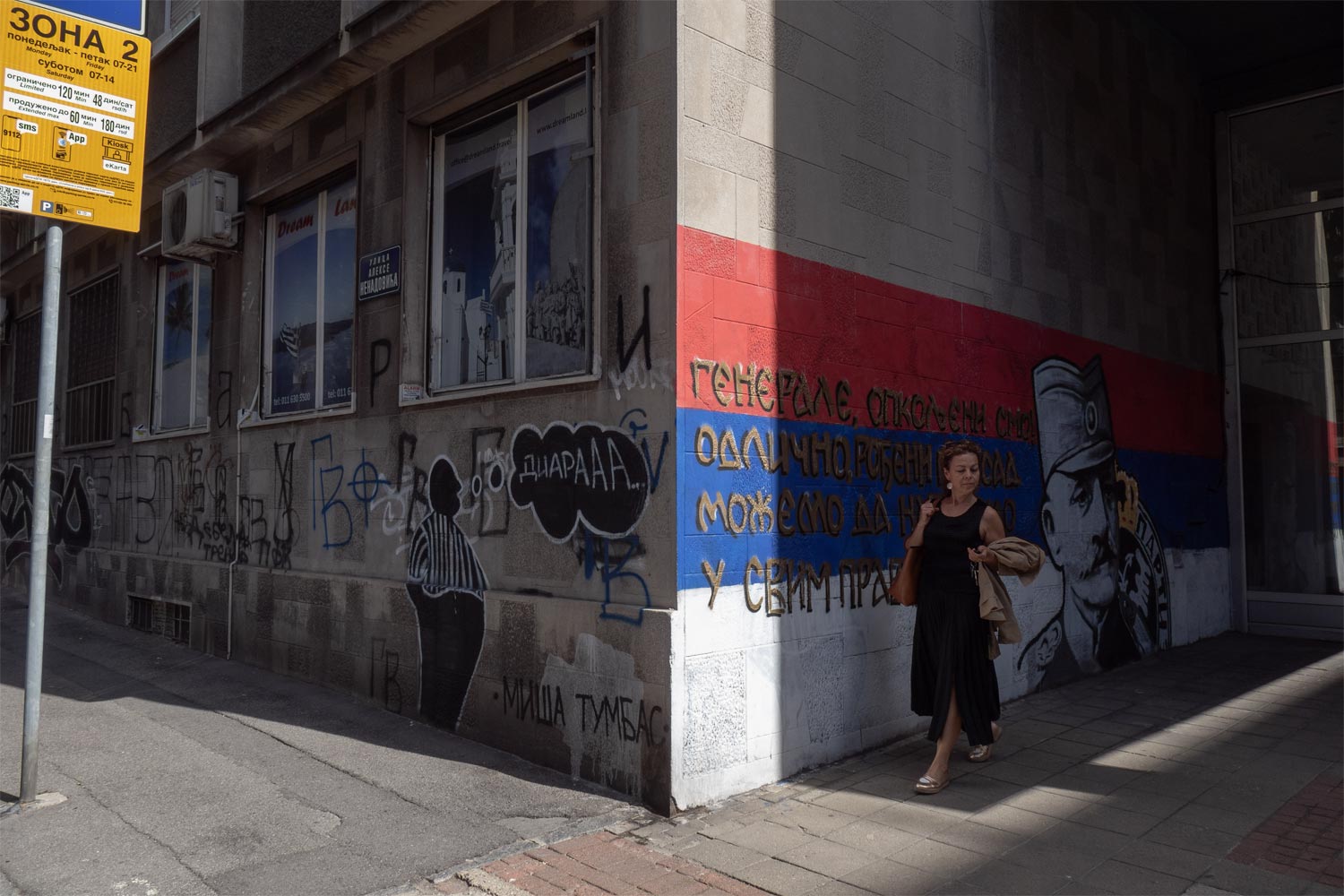
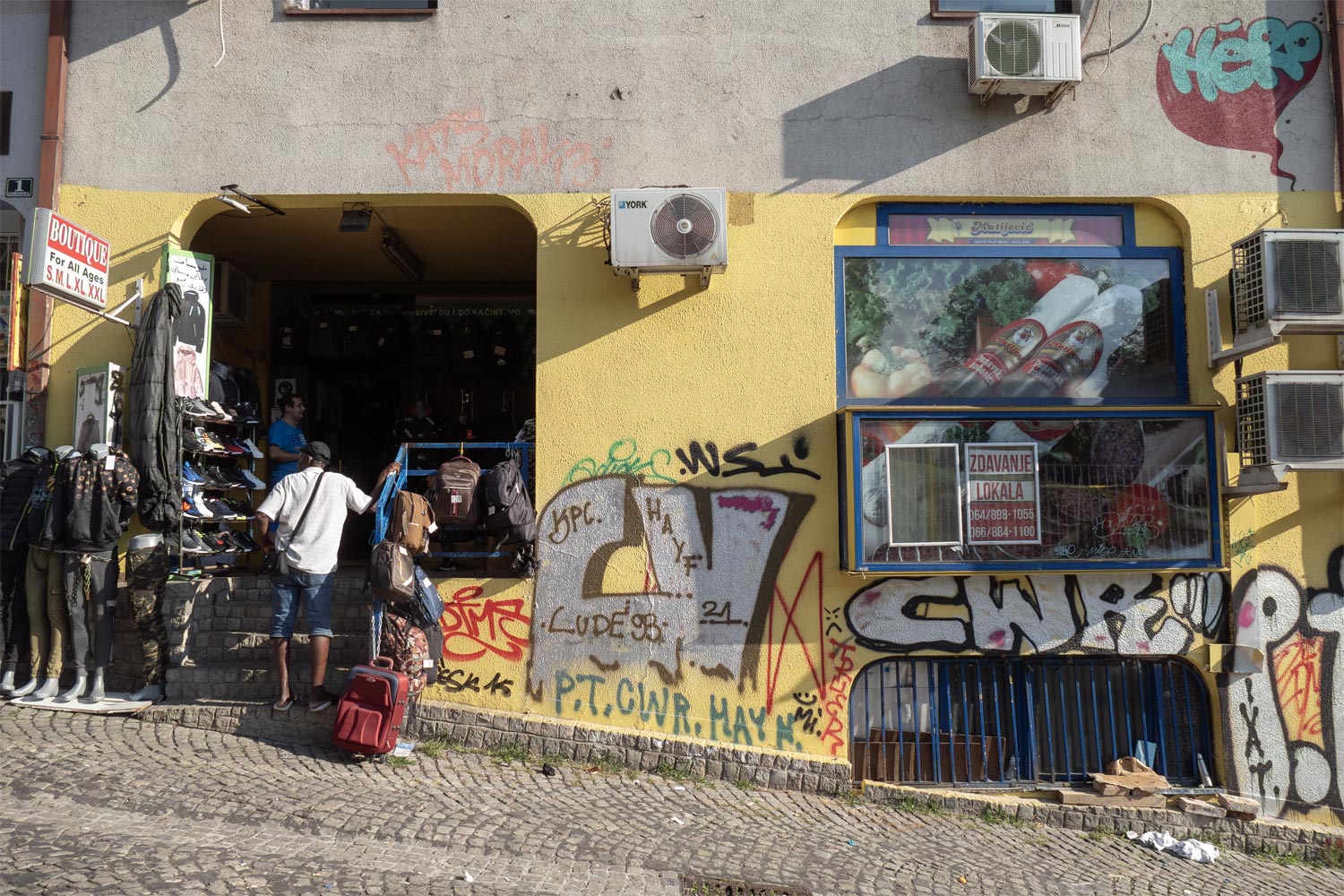
Pop-up markets on the streets.
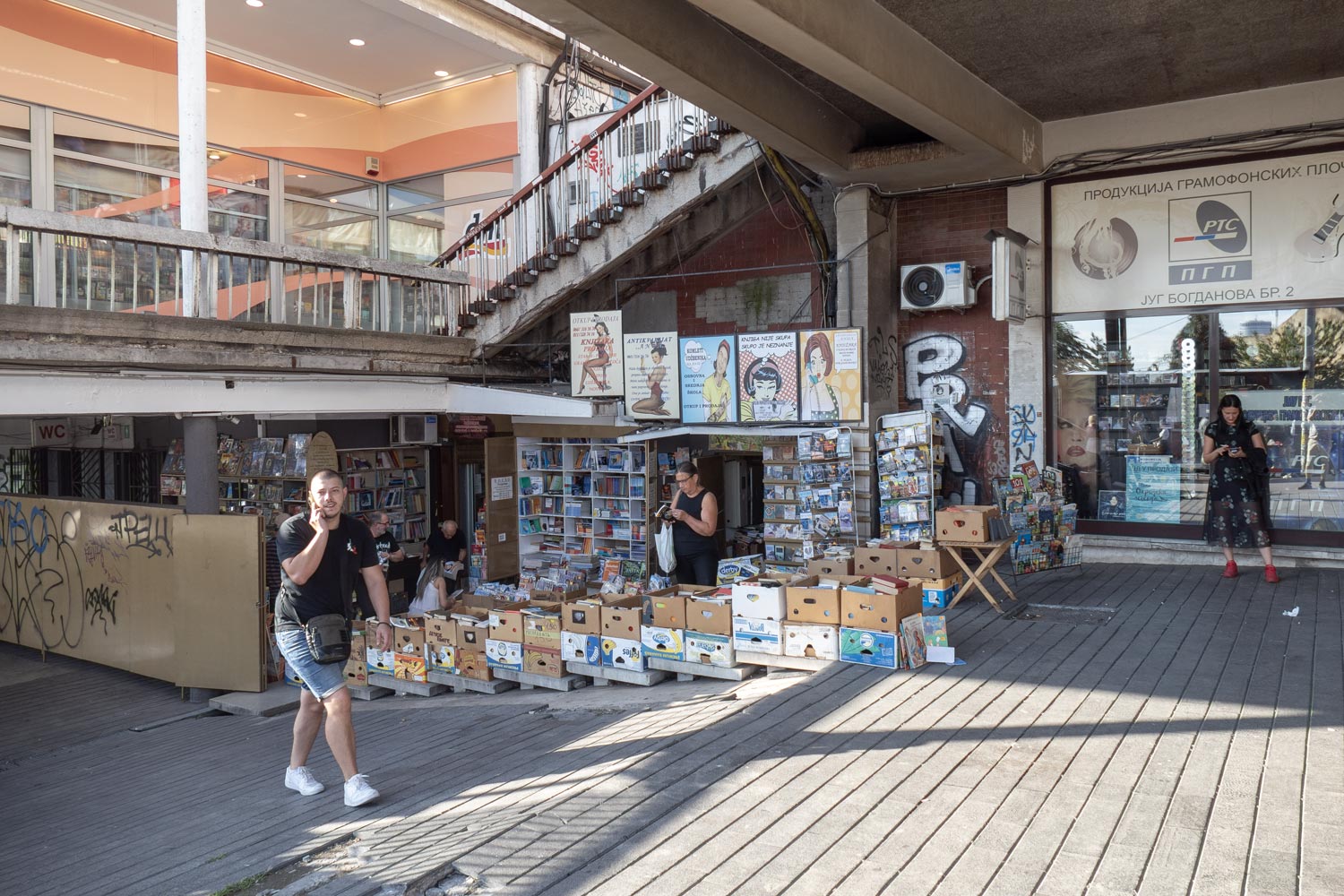
And this is still the city center! In residential areas stands such a dullness that one could shoot oneself out of depression.
Not even the famous Genex Tower is pleasing — the famous building with the Zepter logo. This building is considered a monument of the brutalist architectural style. It consists of two towers, one of which is residential, while the other is dedicated to offices and hotels. There used to be a rotating restaurant in the circular structure at the top of the tower.
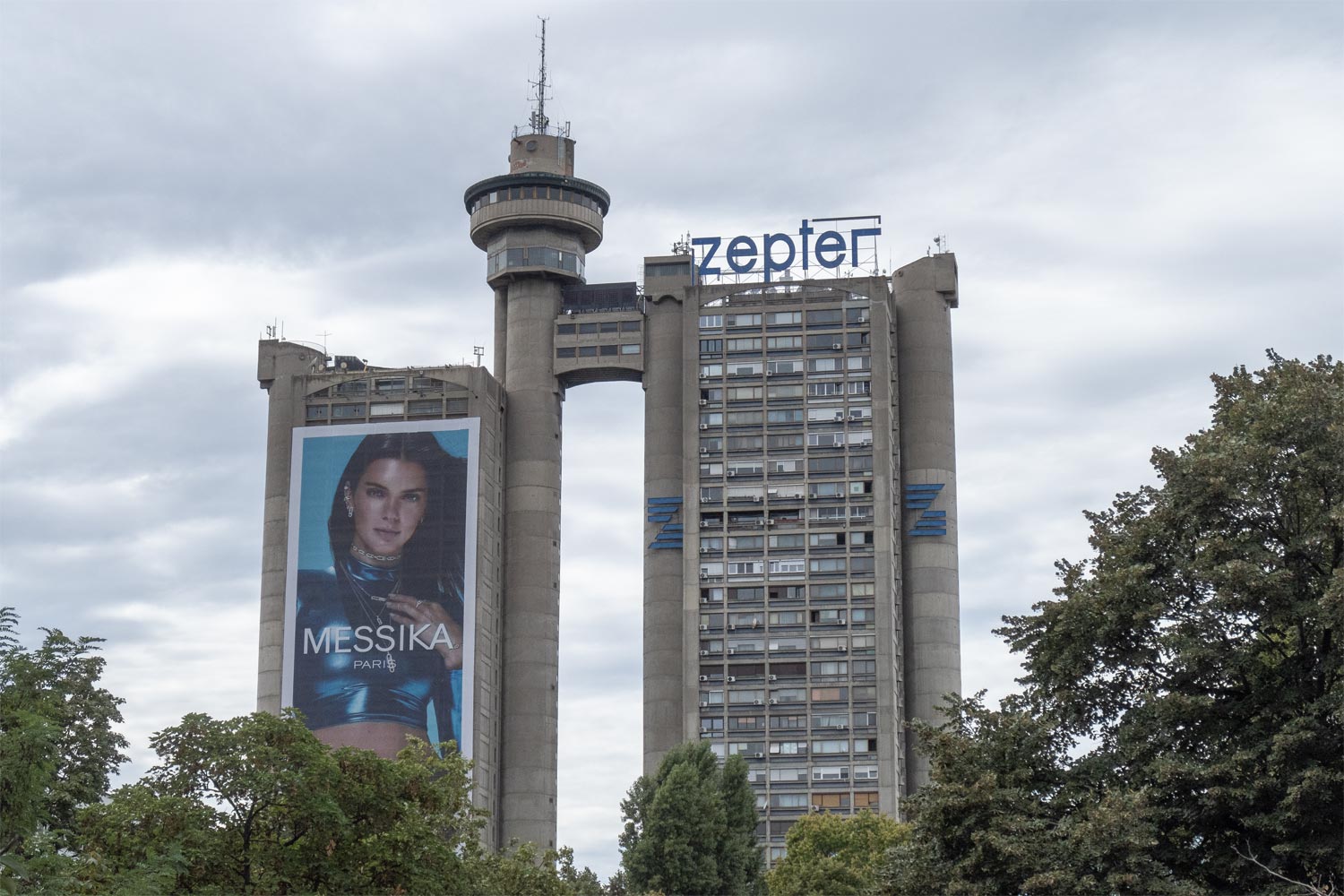
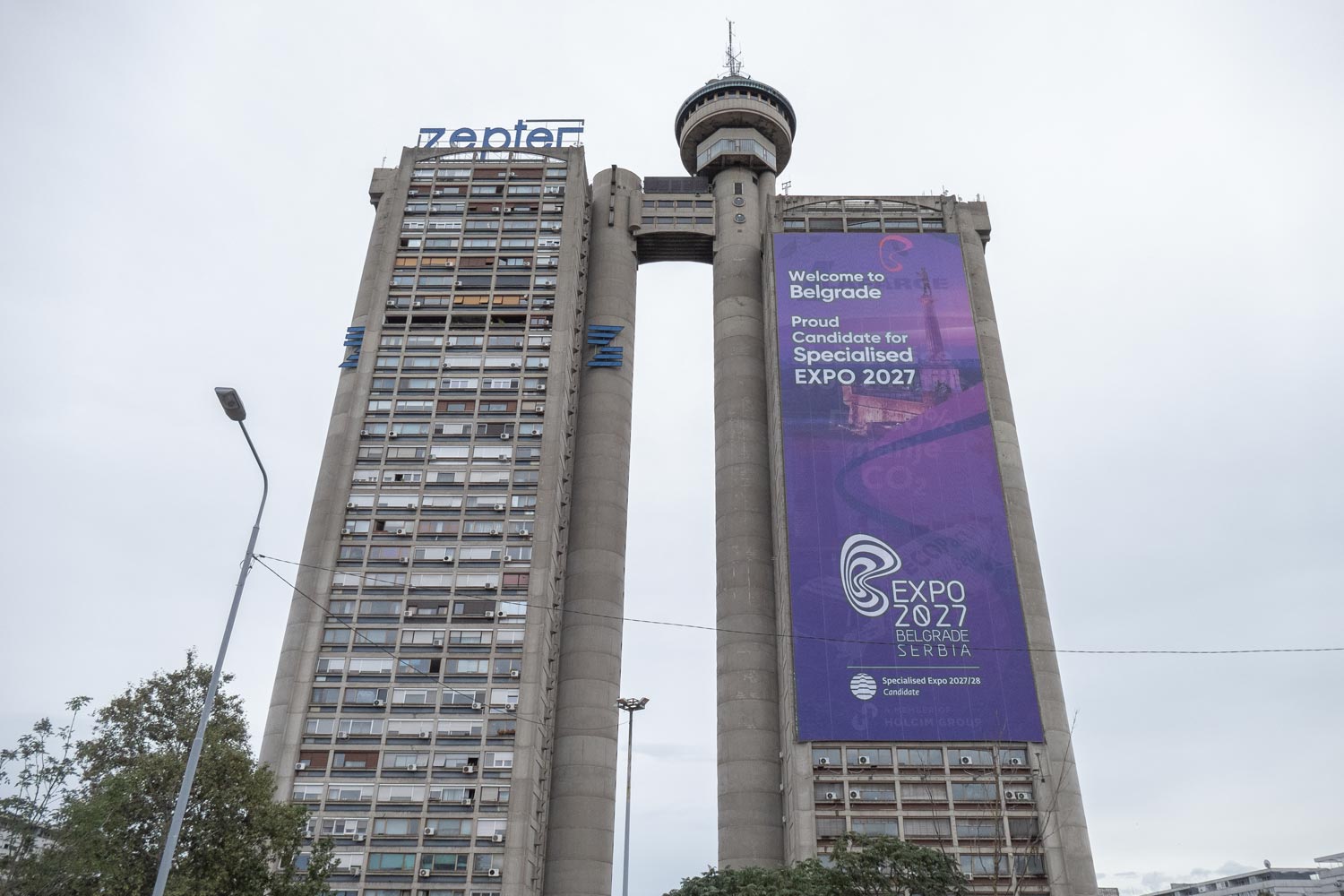
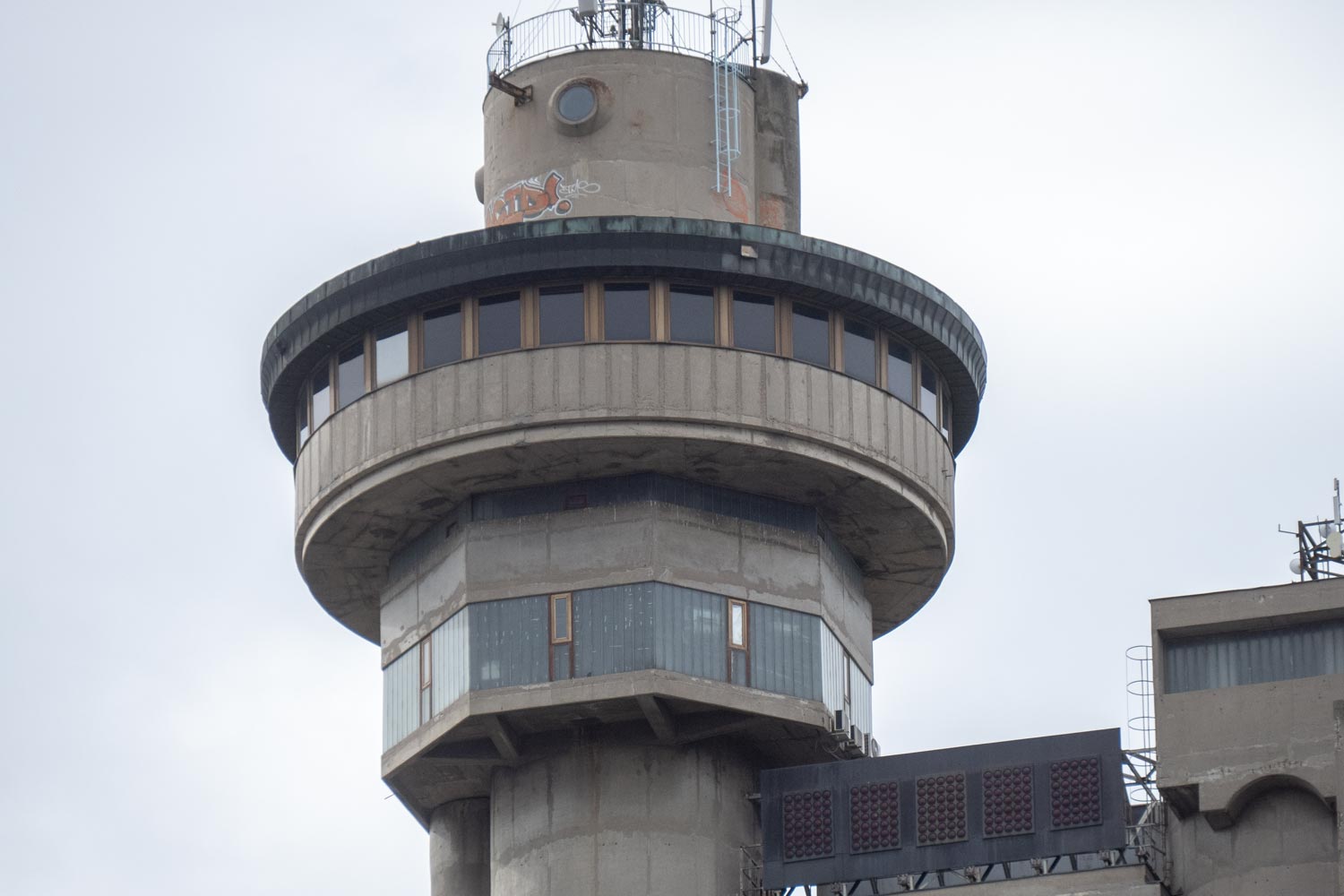
It might seem like good housing. But everything in front of the house is completely shattered into pieces. It feels like it’s not Belgrade, but Kabul.
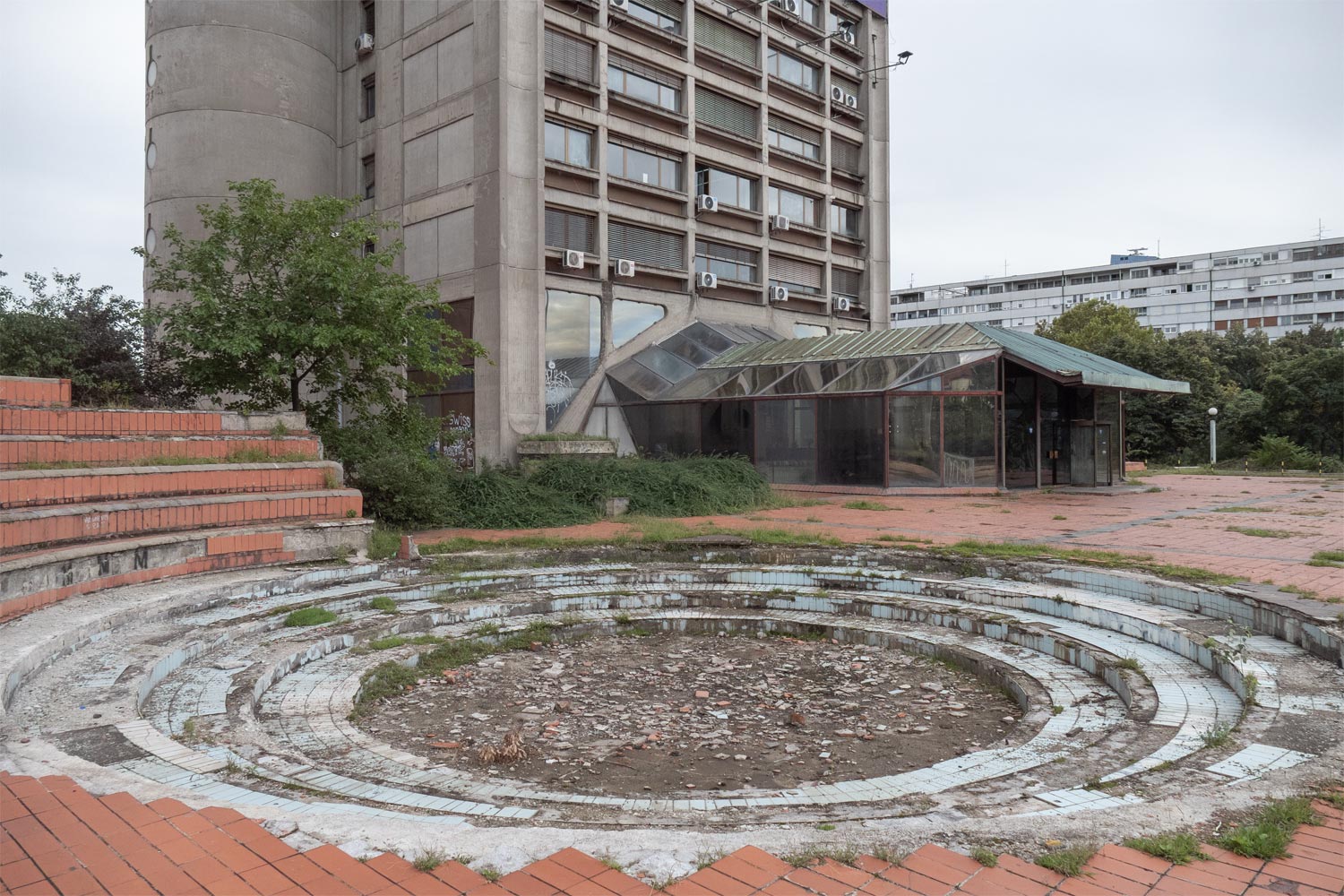
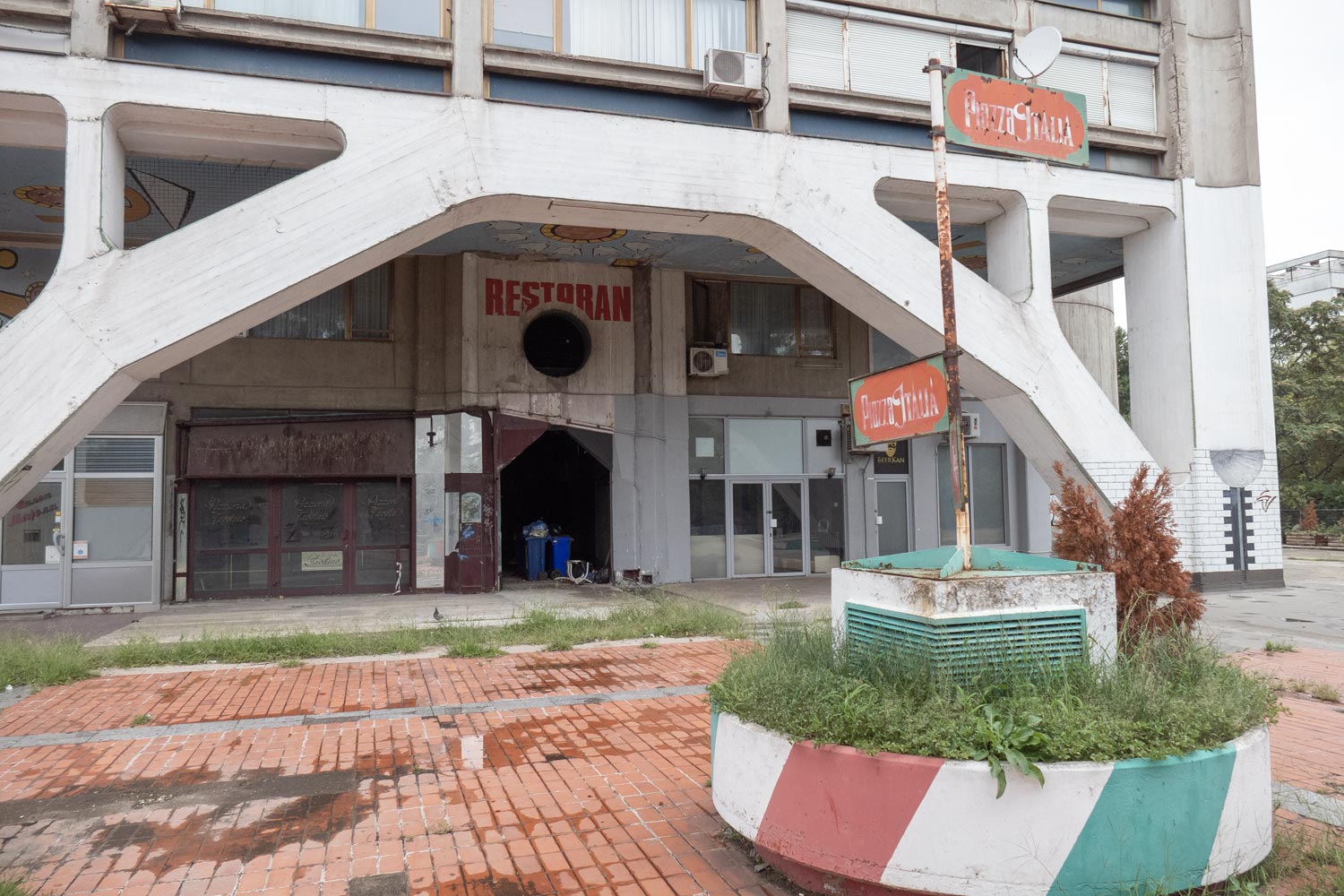
Belgrade turned out to be the disappointment of the year. Serbia seemed like a tourist Mecca and a gastronomic center of the Balkans, but it turned out to be the dirtiest and most unwelcoming country in Europe.
Just like in any city, if you look for it, you can find several interesting places in Belgrade. These include the fortress, the historic district of Zemun, the cobblestone Skadarlija Street, and the wonderful Tesla Museum.
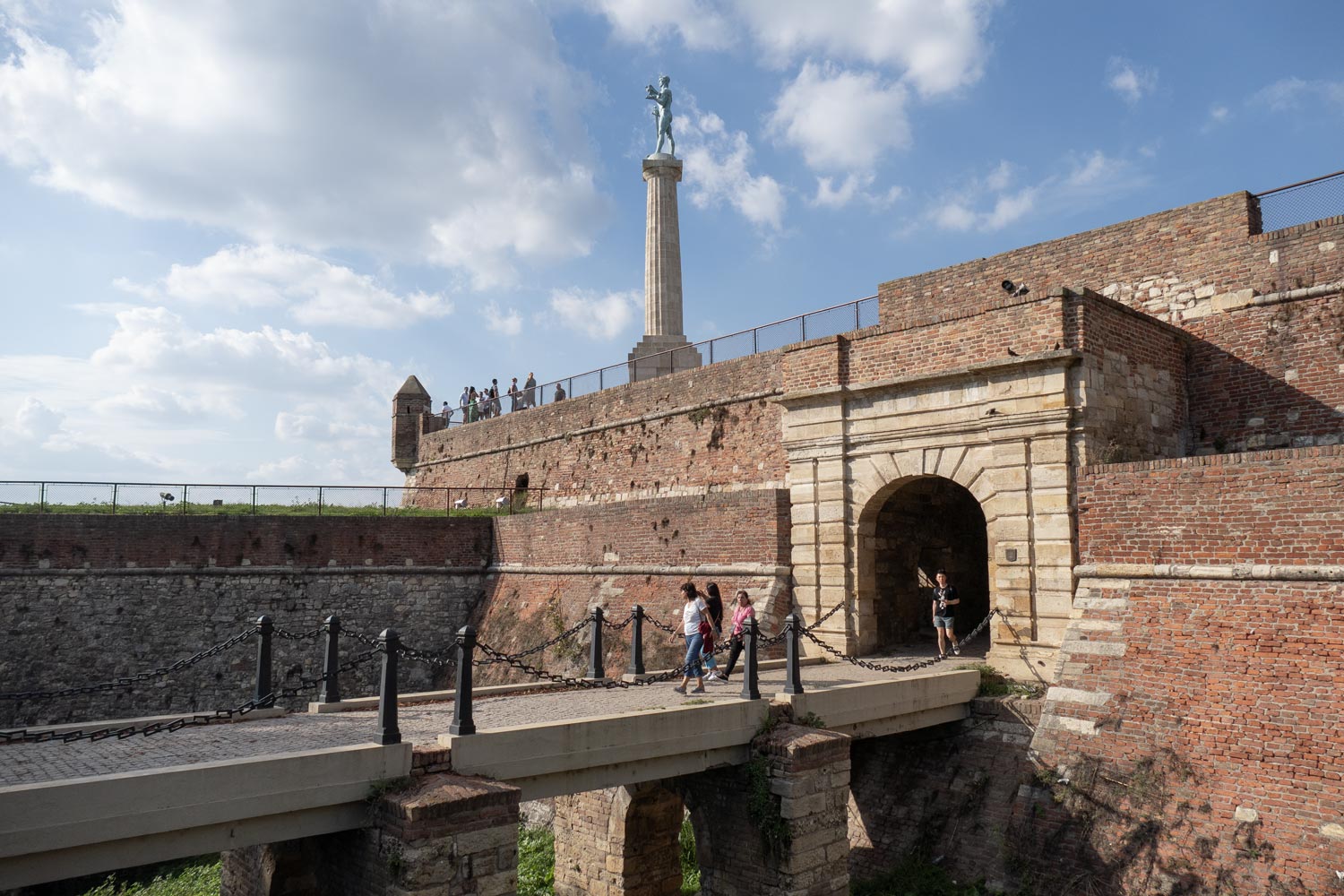
But here’s the problem: you don’t feel like searching. Belgrade has lost its cultural identity and repels with every detail. You can escape here, but to live — never.
